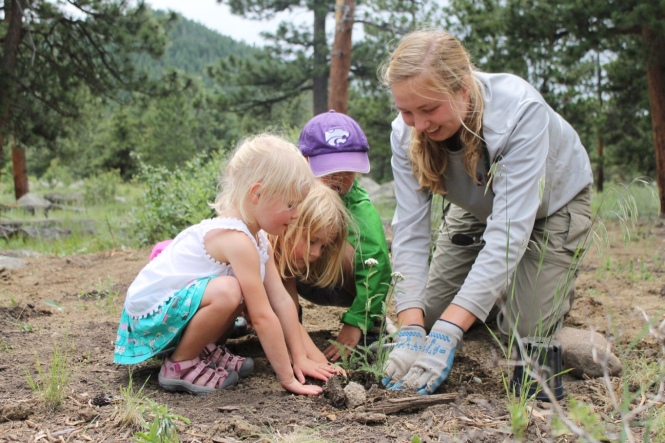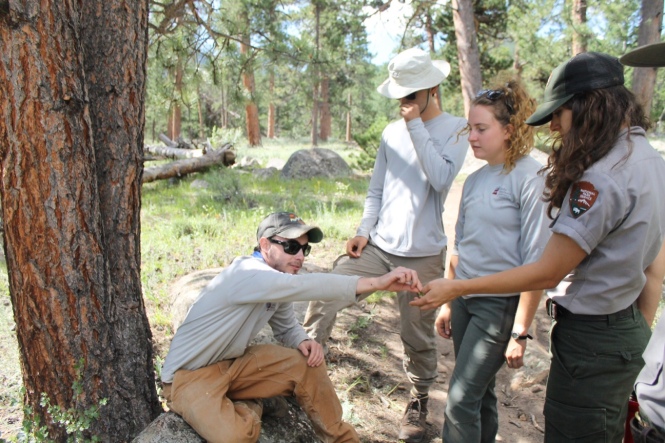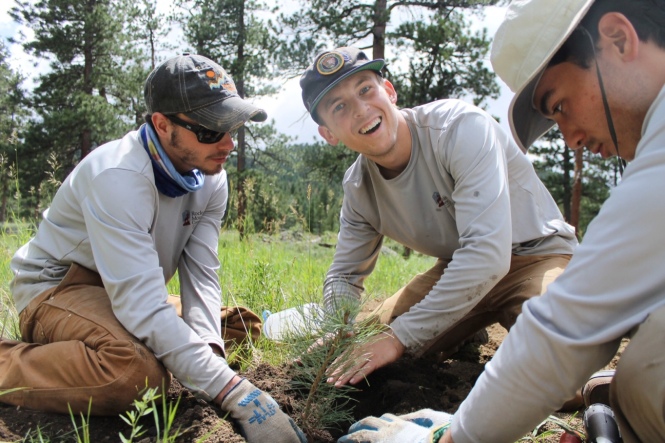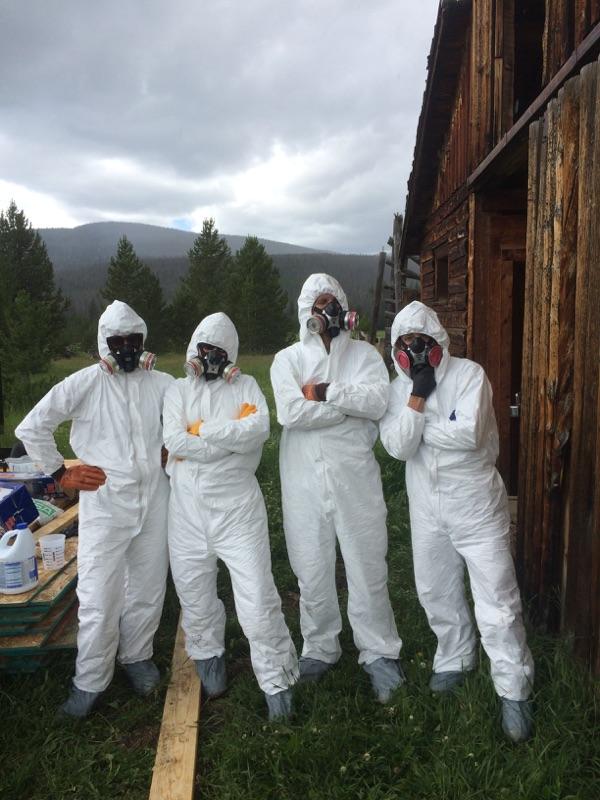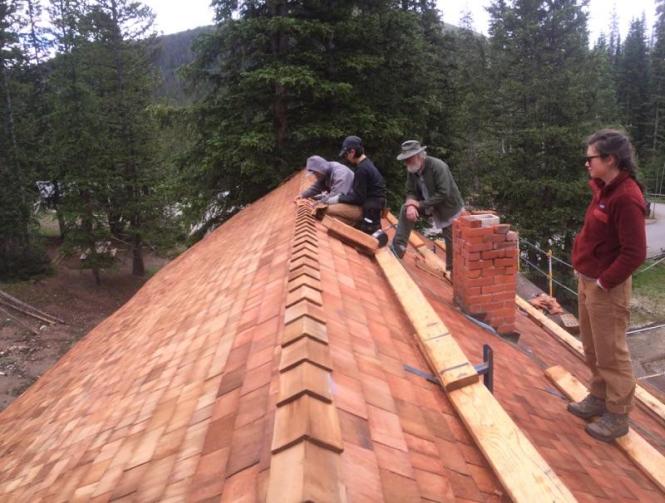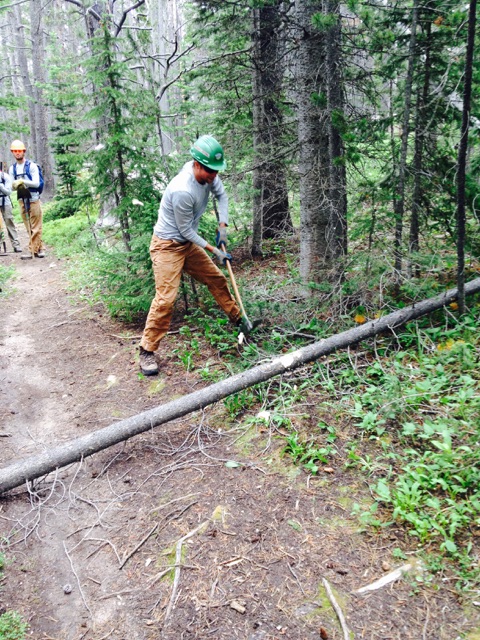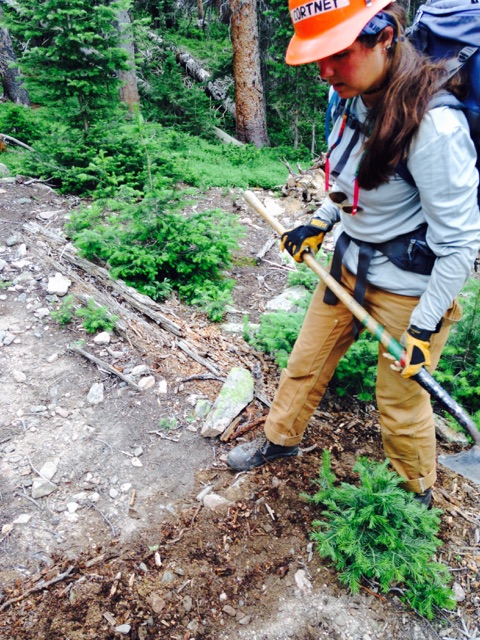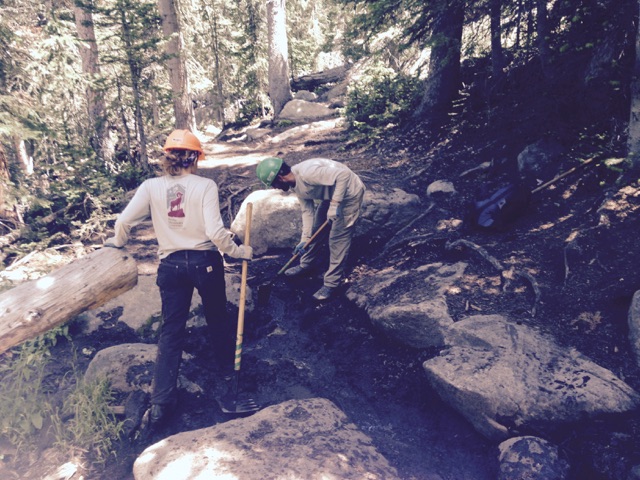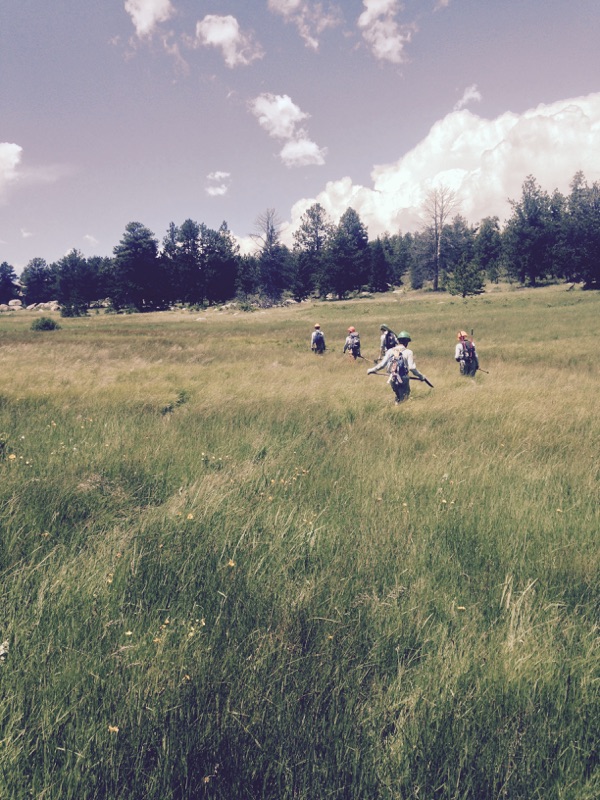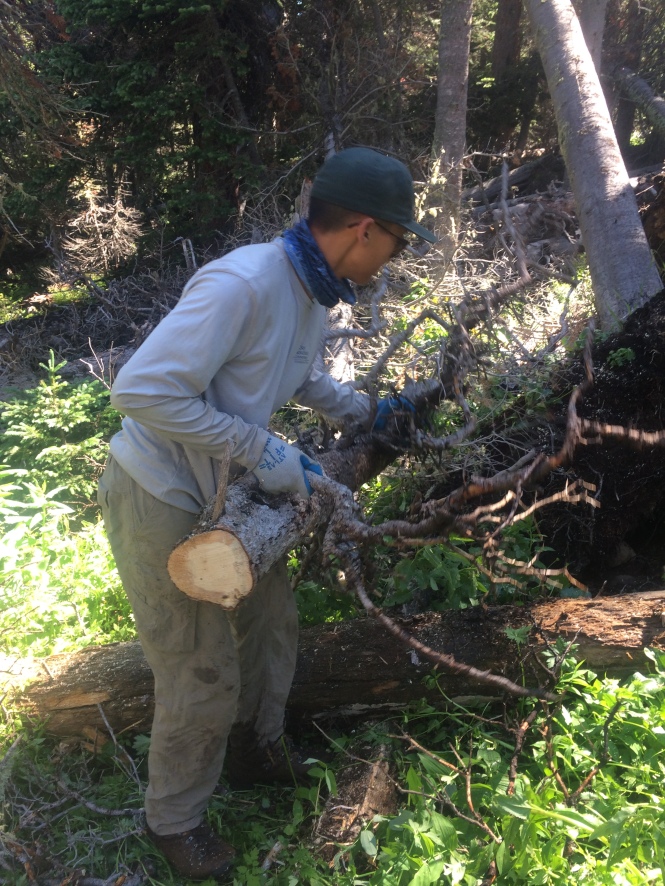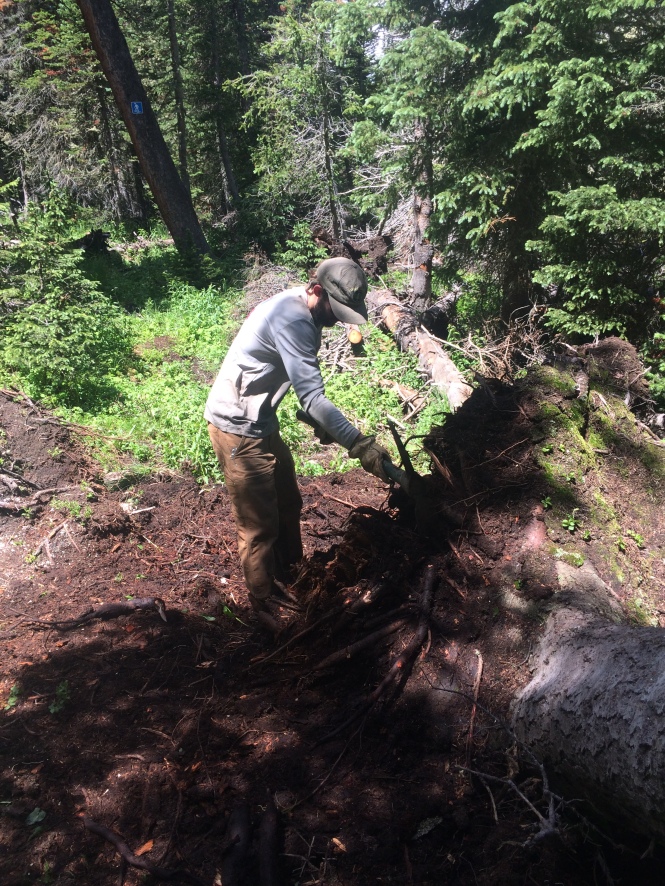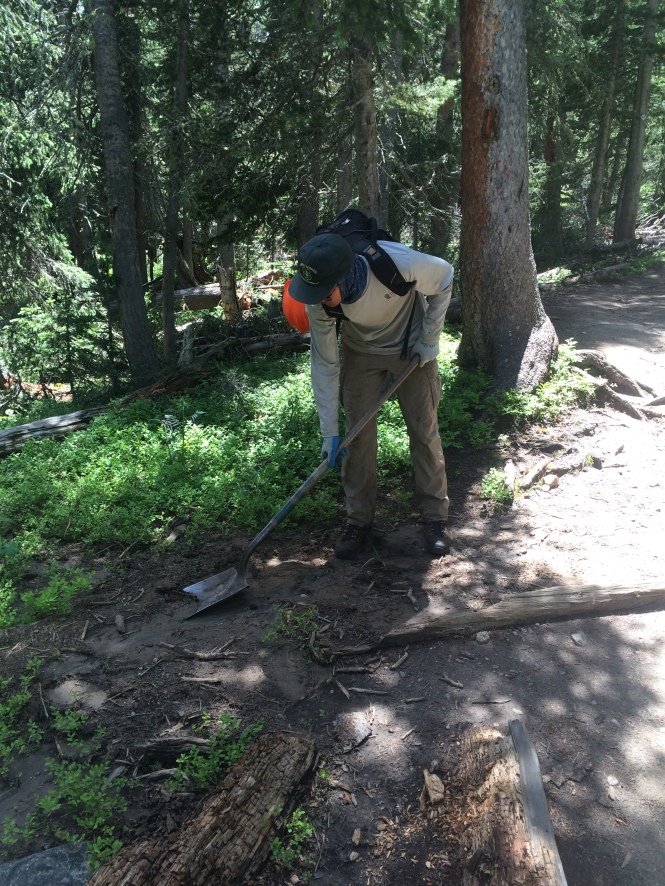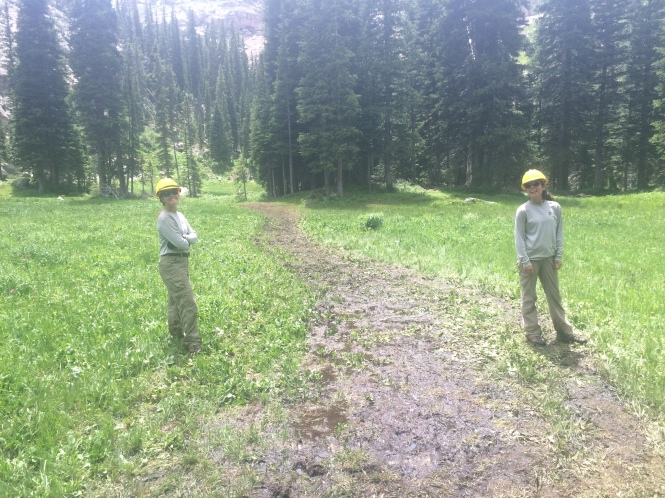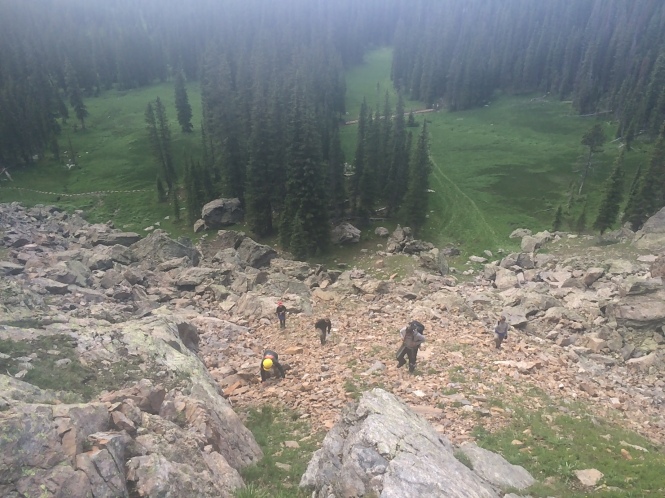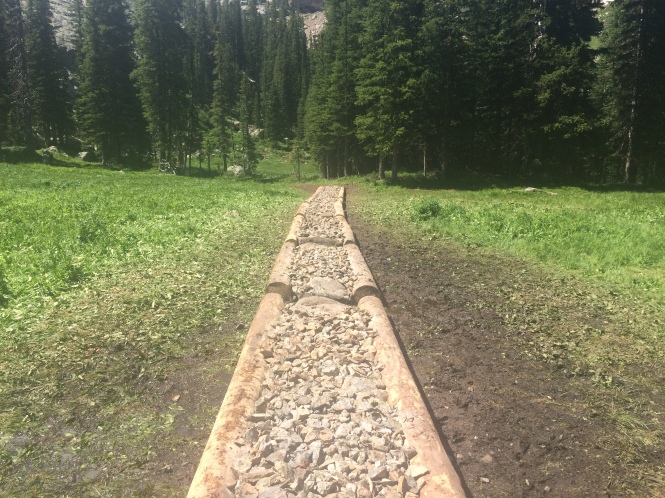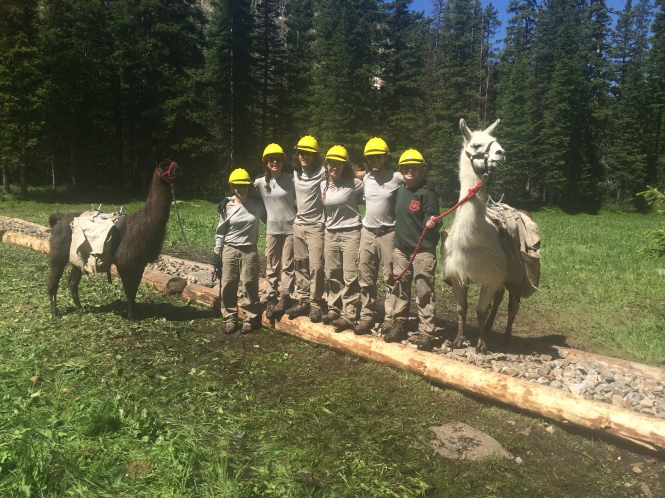Kawuneeche Crew
Monday
Our week started out with returning to the deck to dig some holes. There was also a little bit of demolition left to do on some parts of the old deck. Digging the holes for the support beams took up most of the day with also mixing some concrete for the ones that were already finished. There was also time for us to meet the two new people joining our crew to help on the deck.
Tuesday
The day started out the same until three of us stayed to work on the deck. While working on the deck we had to dig a few more holes for the support beams in for the deck framework. During the afternoon we went to deconstruct some picnic tables while also getting rid of the old wood used for the ones already taken apart. The other three went down to the west side to green mountain housing to scrap and stain some cabins. The drive there and back would take almost 3 hours so there was not that much time to work on the cabins.
Wednesday
We were still having half go down to the west side to scrape and paint cabins while the others stayed at the deck. For the first half of the day we were working on the deck and adding support to the pieces that had already been put up. This involved cutting and measuring pieces of wood at different sizes. After lunch we had to wait for an order of lumber to come in so to kill the time we went to start building picnic tables. When the lumber finally arrived we had it sent up to the deck while we stayed down at the shop to finish making tables and help clean up around the shop till it was time to go.
Thursday
In the morning we had a small party for one of our workers that was leaving before everyone went out to their job sites. The ones at the deck were able to finish the framework that still had to be done. The others went down to work on scraping and staining the cabins on the west side.

Garret scraping the side of the cabin.

Ashleigh and Tate mixing some concrete.
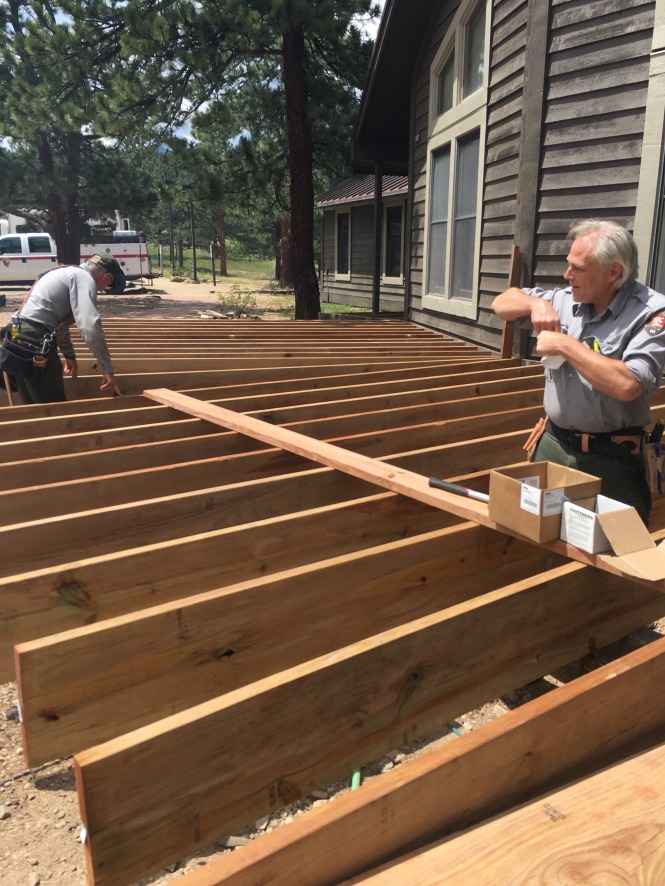
Half of the framework being measured and cut to length.
-Ashleigh Trujillo (Kawuneeche Crew Leader of the Week)
Boulder Crew
Sunday-
Lucas was in a wedding in Ohio during the weekend and arrived to Denver on Sunday. Ryan offered to pick him up at the airport. Brendan tagged along so the three of them could go to church afterwards. I (Andrea) then concluded “I like car rides” so I signed myself up for the trip. Ally said “well if everyone is going, I might as well go too.” And like that, we all woke up at 5am and voluntarily confined ourselves in a narrow car for a long period of time. I bet Lucas did not expect to find a crowded car, but he must have loved being compressed against the window and being unable to find a comfortable position. Then, Ally had the marvelous idea of passing by her house to see her DOGGOS! How could we say no to doggos?
Monday-
Crime Scene:
Date: July 17, 2017
Location: Sourdough Trail
Evidence: Sawdust- fresh
No witnesses
From the beginning of the day we knew it was not going to be a normal Monday. Some of our crew members had a rough night. One was visited by food poisoning and another by an unidentified small sized animal. Nonetheless, they diligently woke up at 6am and got ready to hit the road- I mean trail. We were told we were going to work at Sourdough. Only that I never heard the “going to work at” part so I was profoundly confused as to why everyone was suddenly obsessed with sourdough bread. It was not until I saw the trailhead sign that it clicked. We grabbed our crosscut saws, axes, etc, and started to hike. But something was wrong… An hour went by and there were no fallen trees on sight. Then we saw it. A smoothly bucked log with sawdust that looked as if it was mocking us. It could have only meant one thing: a volunteer cleared the trail and never communicated it. A biker confirmed that there were no more trees ahead, so we hiked back and drove to Brainard Gateway to dig some drains.
Tuesday-
On Tuesday we hiked about 12 miles! We arrived at Coney Flats Trailhead really early in the morning. We were welcomed by a beautiful lake that merged with the blue sky, so that was a nice way to start the day. We hiked 3 miles just to get to Beaver Creek, the trail we worked on. There we cut 13 trees and then stumbled upon treeline. Since we had a little bit of time left we explored Coney Lake Trail and got fiercely stabbed by branches, which led us to the conclusion that the trail needed some serious brushing. On our way back to Homestead Ned, a woman drove by us, rolled down her window and said “you drive like an idiot” to our driver. This provoked explosive emotions inside of me (mostly because it isn’t true) so I wrote a poem about it and read it aloud during dinner. That night we spiced up our sump ritual by making ANIMAL SOUNDS. The dog, elk, cat, sheep, and cow medley led some of us into tears of laughter. It was insane. Afterwards, I taught everyone how to dance salsa for my lesson plan. Every Puerto Rican knows how to dance salsa.
Wednesday-
Geoff came to work with us and he told me I should write the blog in Spanish, así que eso mismito haré. Por la mañana, Geoff nos encontró en el workcenter y todos guiamos hasta Hessie Trailhead, que estaba a una elevación de 9,000 pies de altura. La altura, el cansancio acumulado y el hecho de que el camino estaba extremadamente empinado ocasionaron que caminara a 0.000000000001 millas por hora. Después de caminar lo que sintió como ochenta millas llegamos hasta Woodland Lake Trailhead. Allí nos dividimos en dos grupos: tedious-lopping (Louisa, Lucas, Ally y yo) y crosscuts (Ben, Ryan y Brendan). Gracias a las conversaciones con Geoff y a la música descargada en el teléfono, tedious-lopping no fue taaaan tedioso. Justo cuando Ben nos avisó que íbamos a regresar empezó a lloviznar. En cuestión de minutos, nubes escalofriantemente grises se apoderaron del cielo. Nosotros básicamente volamos de regreso, pero comoquiera terminamos empapados. Además de esa aventura, Ben y Geoff vinieron a cenar a Homestead Ned. Preparamos una cantidad absurda de [päd THĪ] y ¡SOBRÓ! Ya saben que comí de almuerzo el próximo día.
Thursday-
El jueves empezamos el día con un Safety Meeting en Boulder. Esto fue algo muy positivo pues todos estábamos agotados de caminar tanto y así pudimos descansar un rato más. La reunión fue sobre PPE y dar updates. Después de eso nos dirigimos hacia Brainard Lake y dimos mil vueltas buscando estacionamiento. Como todo estaba lleno optamos por estacionarnos en la calle. Empezamos a caminar y de nuevo no estábamos encontrando arboles así que le preguntamos a unas mujeres si vieron árboles durante su caminata. Dijeron que no, así que fuimos a otro camino, South St. Vrain Trail. Allí cortamos 14 árboles, lo que nos hizo muy feliz porque caminar con sierras para no cortar nada es muy frustrante. Luego fuimos al workcenter para pulir las sierras, hasta que Ben nos mandó pa’ la casa. “You should be at home. Go home!” Seguimos las instrucciones de Ben y, ya en Homestead Ned, cocinamos pizzas con básicamente un lanzallamas que encontramos en el camión del Forest Service. ¡De ahí fuimos para Boulder, me dejaron con mi padre y ellos fueron a ver una película!
-Andrea Rodriguez (Boulder Crew Leader of the Week)
Red Feather and Rawah
This week Red Feather and Rawah joined forces for a hitch in the Comanche Peaks. On Monday morning we set up camp next to the beautiful Comanche Reservoir for four days of intensive trail maintenance in the heart of the Comanche Peaks Wilderness.
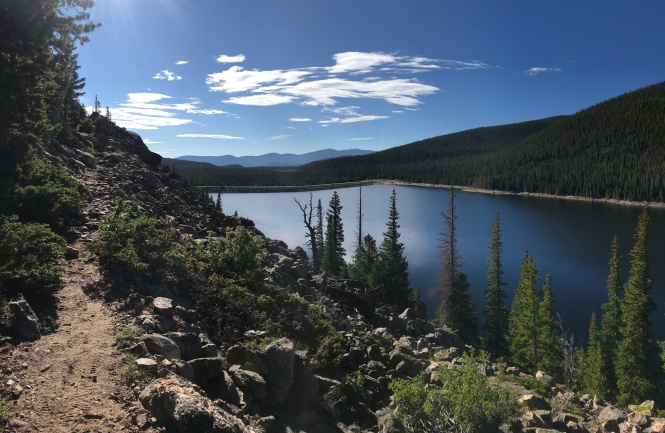
Morning Trail Maintenance Next to Comanche Reservoir
Monday afternoon we trekked up to Comanche Lake, tools in hand, on our first maintenance run. Gus, Noah, and Will cross cut through a monster obstructive log.
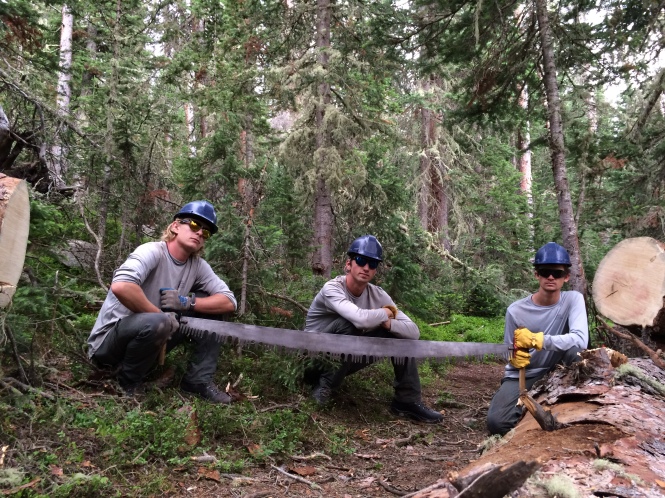
Gus, Noah, and Will Pose Next to Their Crosscut Accomplishment
A twelve crewmember team made for speedy drainage and trail clearing and we made it to the lake with enough time for Anna and Noah to catch us some fish for dinner.
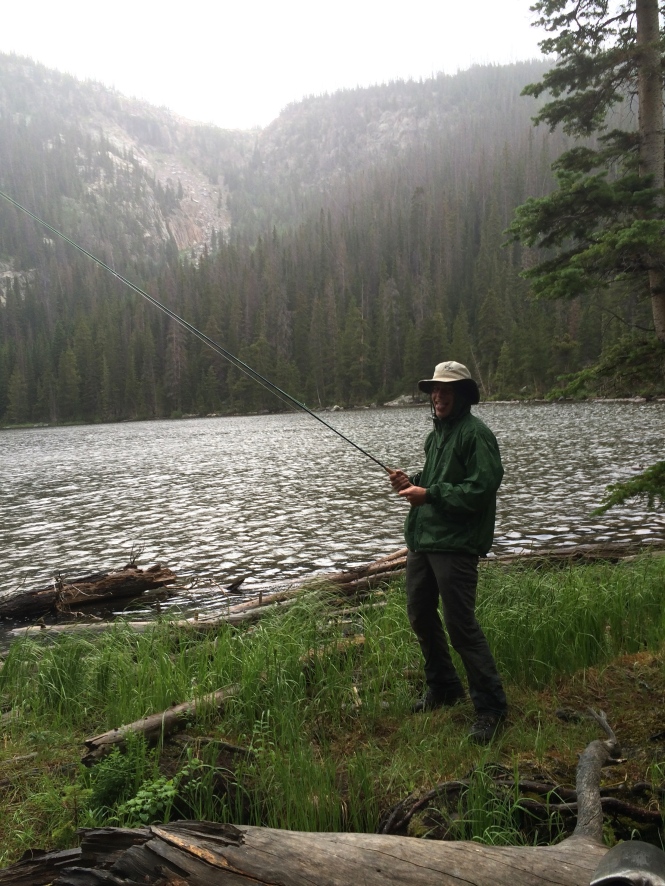
Noah The Fishing Magician

Anna’s Fresh Trout Sizzles Over The Whisperlight
Tuesday Redwah tackled the Beaver Creek Trail, digging over 70 drains on our way up to treeline. The morning break was spent cooling off with a brisk snowball fight in a perfectly positioned snowpatch.

Jumping For Snowy Joy
We stumbled upon an illegal campsite right off the trail and Gus shared his obliteration knowledge as we decommissioned the area back into natural habitat.
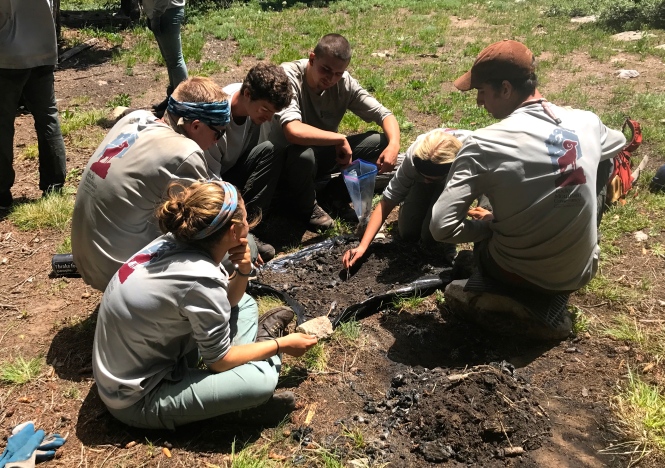
Gus Teaches Campfire Ring Obliteration
On Wednesday we headed back up the Beaver Creek Trail to hit the Mirror Lake Trail. While Mirror Lake trail never lead us down to Mirror Lake it did wind through Comanche Pass with a spectacular view of Rocky Mountain National Park and the Never Summer Mountain Range.
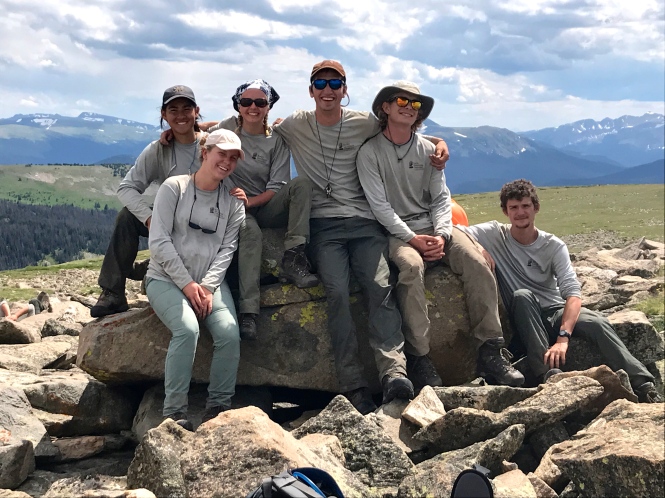
Rawah Crew Atop Comanche Pass
Stephanie also taught a spectacular yoga lesson that was both relaxing and challenging.
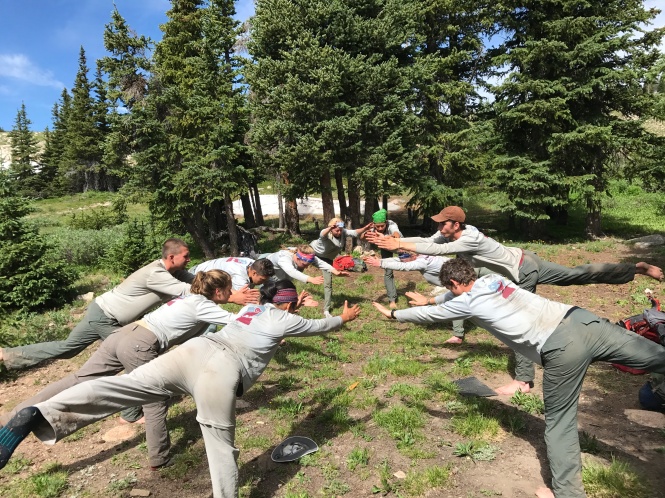
Crewmembers Limber Up With New Yoga Skills
Thursday we packed up and headed out from our Comanche site, digging drains and clearing trees on the lower half of Beaver Creek Trail.

Will Digs a Drain Next to Comanche Reservoir
Anna headed the removal of a downed tree with a particularly tricky bind.
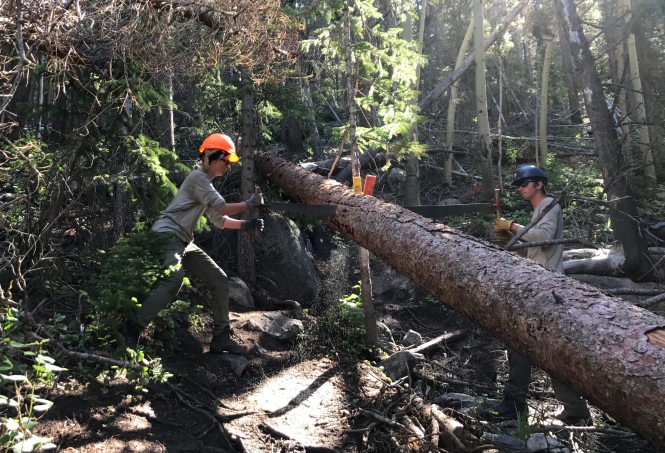
Anna and Gus Crosscut on Beaver Creek Trail
We couldn’t get enough of the backcountry so Redwah capped off our work week of backpacking with a weekend backpacking trip up to Twin Crater Lakes in the Rawah Wilderness. By some stroke of impeccably timed fate, we ran into previous RMCCC members Ben Williamson and Gus Waneka in the parking lot! We joined camping forces and summited South Rawah Peak with four generations of Rawah conservation crew members!

Four Generation of Rawah Crewmembers on South Rawah Peak!
-Shelby Ahrendt (Red Feather Crew Leader)
Estes Crew
Quite a week!
Estes went back to vegetation crew for their last week with them. (Sad but true.) This time around they were “de vegetating.” The task for the week was to spray Musk thistle, Canada thistle and anything that was invasive such as toad flax. Musk thistle is a highly competitive weed that invades disturbed areas, forest lands, pasture, to name a few. It spreads rapidly and forms stands (look like small little thorns or needles on the leaves) which forces out desirable and native vegetation. To kill the thistle, they used 6 ounces of milestone, 4 ounces of MSO and 2 ounces of dye in each tank. The rest of 3 gallons of the tank is made with water.
Monday
Estes started out spraying Upper Beaver Meadow. They sprayed around the area until it rained them out at around 2pm. (When it rains, no more spraying).
For the rest of the afternoon, they spent it around Beaver Meadow visitor center, and around NPS housing, digging out any thistle and Mullein plants.
Tuesday.
Tuesday was a similar day.
They started out at riding stable parking lot spraying any invasive thistle they can find, then in the afternoon, made their way to cub lake trail head.
Wednesday
Woke up with the same mission. “Kill the Thistle”. Moraine Park was the target this time around. Sprayed around the whole camp ground. (This camp ground had bushes of them. So it was a win for Estes.) They were running out of the herbicide (aka the killer juice) within 30 minutes. It was a fun day until rain intervened. They were forced to go back to the shop and do some housekeeping around the shop.
Thursday! (Geoff and Tommy are here!!!)
This day was fun for Estes because they had to work with not only Geoff, but also Tommy! Tommy used to lead the high school program and since that’s over, well he gets to work with us now!
Estes went back to Moraine Park to finish the unfinished business! They are one very committed crew for sure. Although the whole camp ground could not be finished in two days, they did kill a lot of thistles (as promised). Now the camp ground is almost thistle free. Hopefully, some vegetation can grow back to their places now.
Since every “veg crew” had an afternoon meeting, Estes was back to the green house to do some transplanting.
What a fun week “de vegatating”

Claire in a sea of Musk Thistle
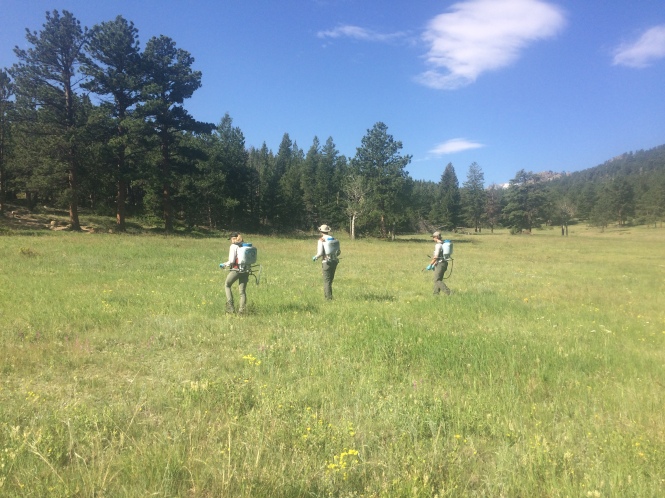
Claire, Chris and Sal use a grid to tackle invasive species

Chris, Simbi, and Grace spraying some weeds with a view

-Simbi Umwali (Estes Crew Leader of the Week)
Shadow Mountain Crew
What a great week! There is nothing better than spending time with good people doing excellent work in places we love. This week Izzy, Will, Mary, Anna, Elise, and I spent our days on hitch in a beautiful part of the Rockies. The trail we worked on is a 24-mile loop known as South Fork Loop. Our main objectives were to clear the trail of all fallen trees and scout ahead to get a better idea of what needs to be done in the upcoming years. Every morning we started our day at 7:00am for our routine stretch circle, safety concerns, and question of the day. The question of the day is a great way to wake up the brain in a fun and sometimes interesting way. Once awake and stretched out, a game plan on how to best tackle the objectives of the day is discussed. Most days we would split into teams of two to four members, to work on different sections of the trail. Two teams worked on clearing trees with chain saws, while the third focused on cutting tread and clearing brush. All together we cleared well over 200 trees, and cut 500 feet of tread.
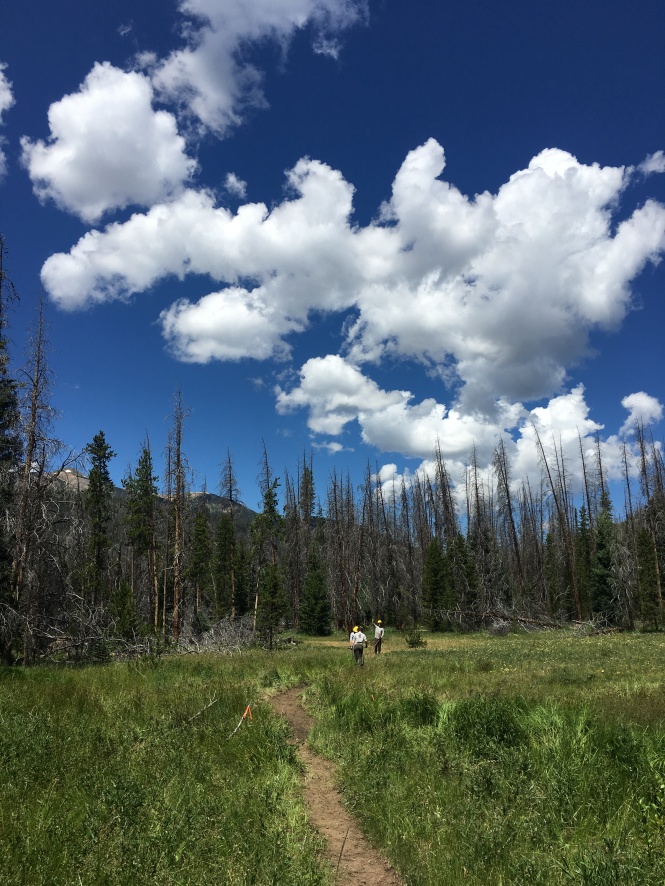
It was a wet hitch, almost every day coming off the trail we were welcomed by a rain/ hail storm that kept things exciting. However, there was nothing that could dampen our good time. The Evenings were filled with lots of laughs, good conversations, and warm camp fires. We even stopped to soak our feet and wet our hair in the cool waters of the nearby streams.

-Curtis Jay Hall (Crew Leader of the Week)

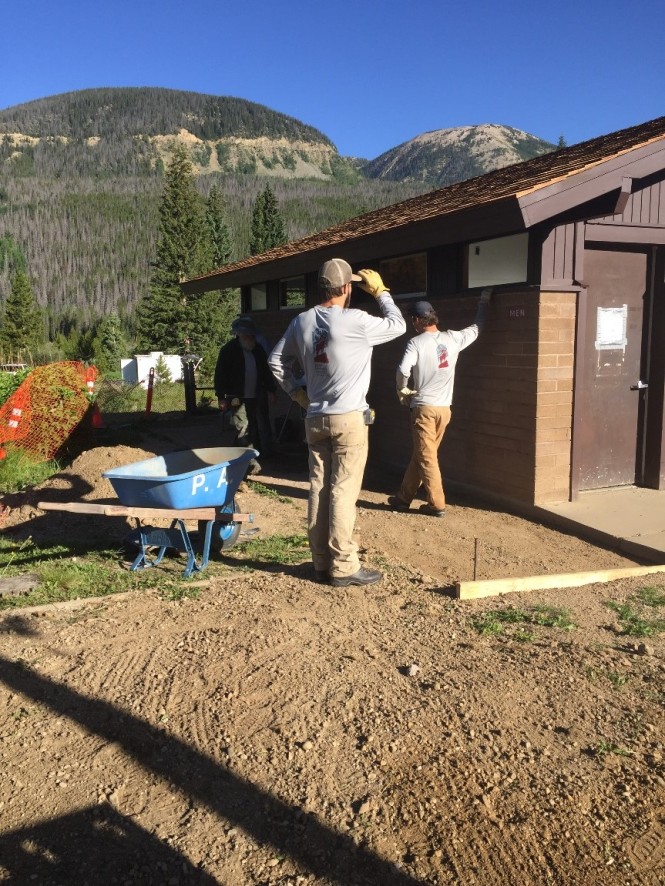
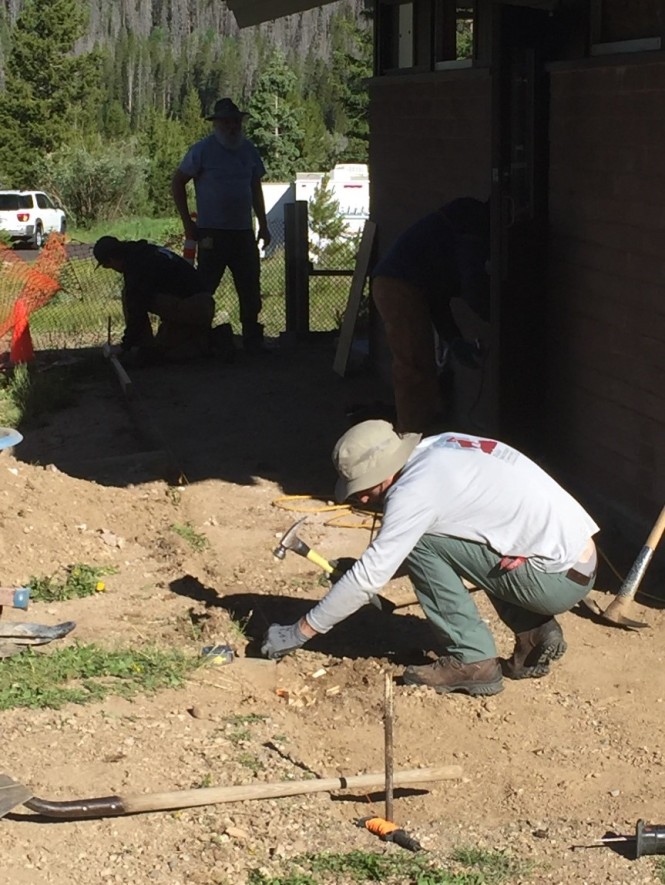
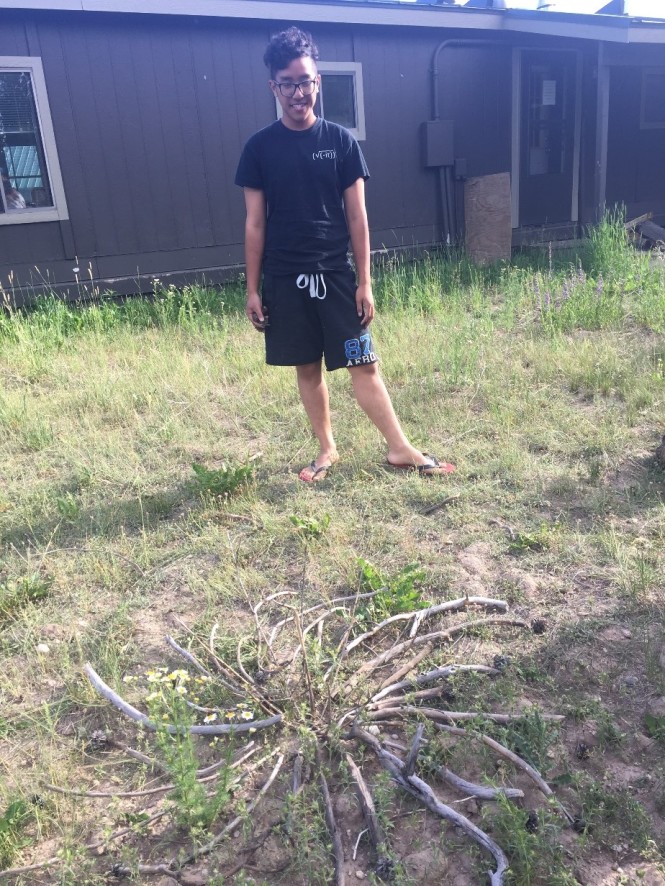
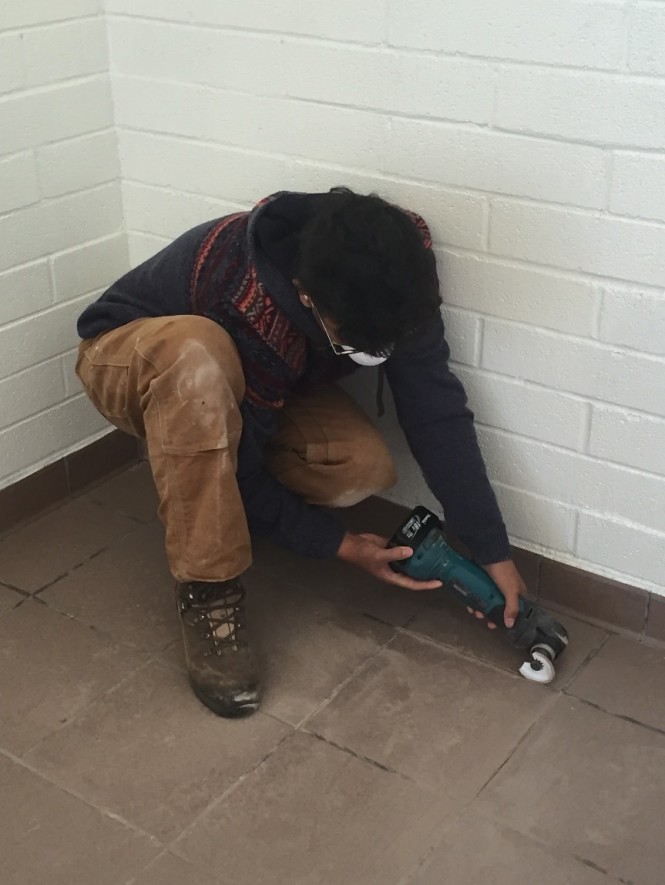
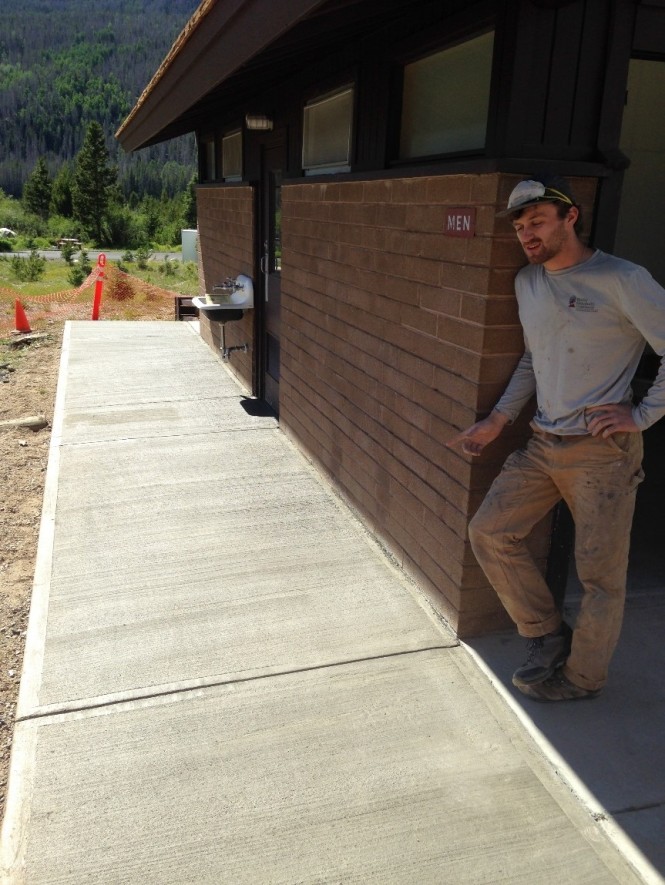
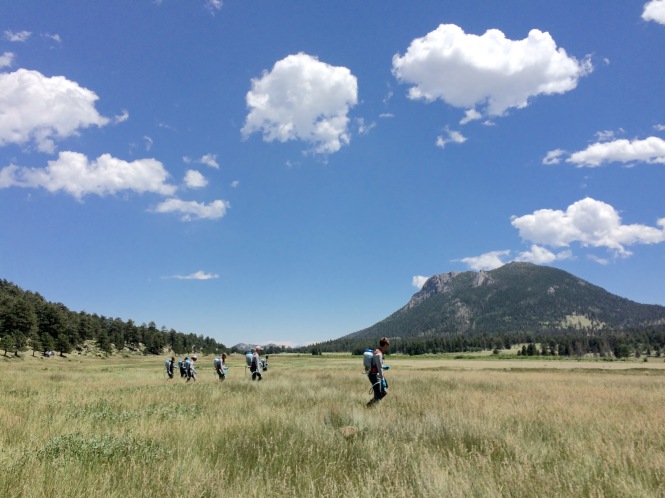
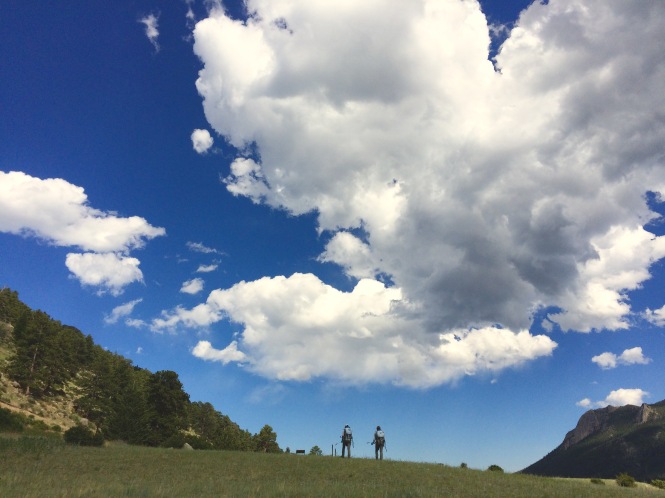
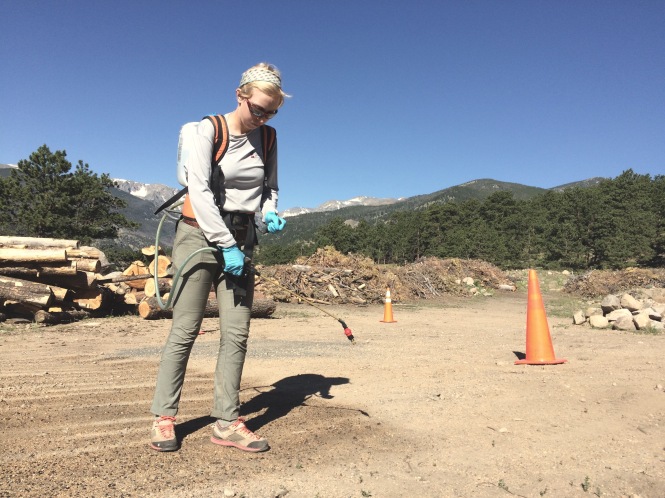 Before we use our backpack sprayers, we had to calibrate the amount we would spray per acre. Here, crewmember Jesse is going through the calibration process before spraying weeds.
Before we use our backpack sprayers, we had to calibrate the amount we would spray per acre. Here, crewmember Jesse is going through the calibration process before spraying weeds.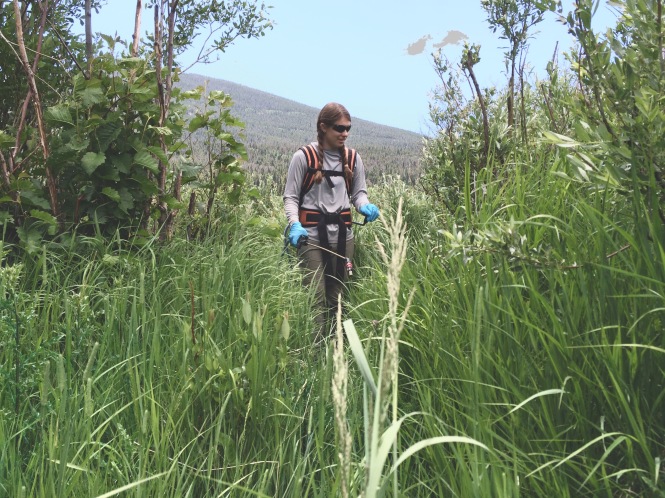
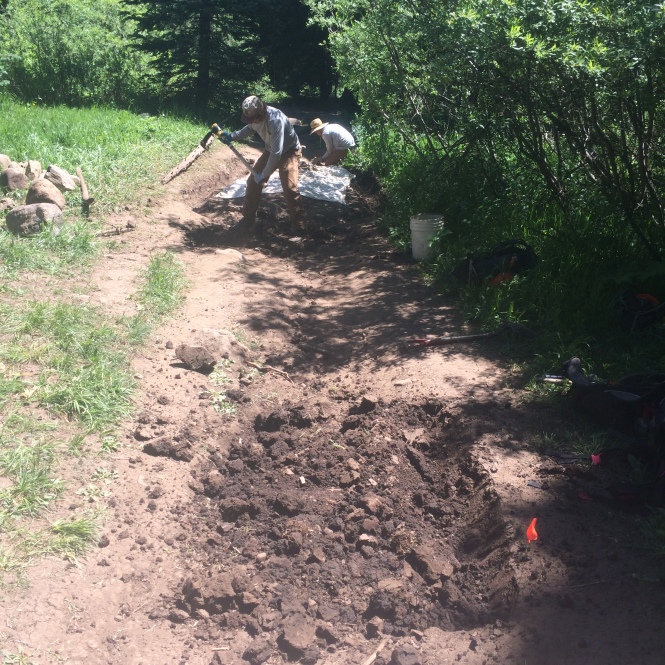
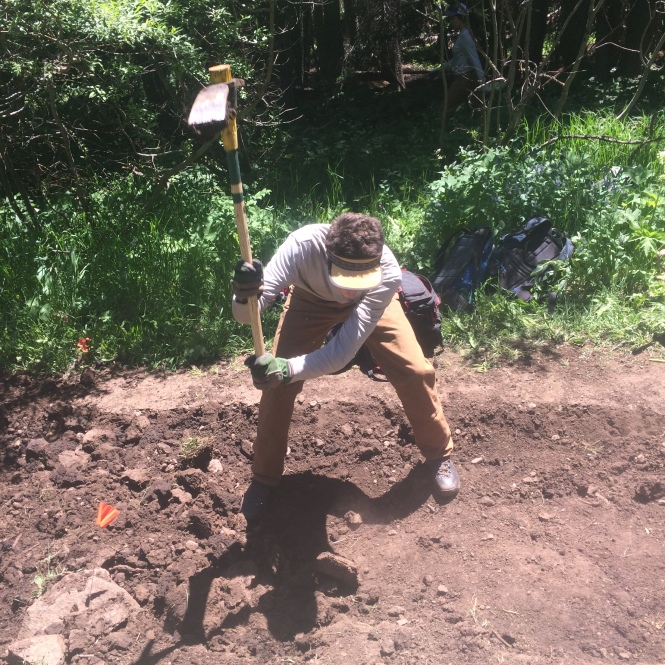

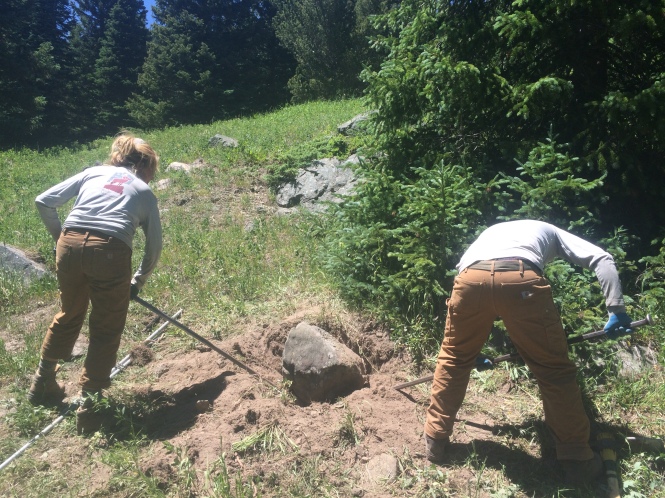
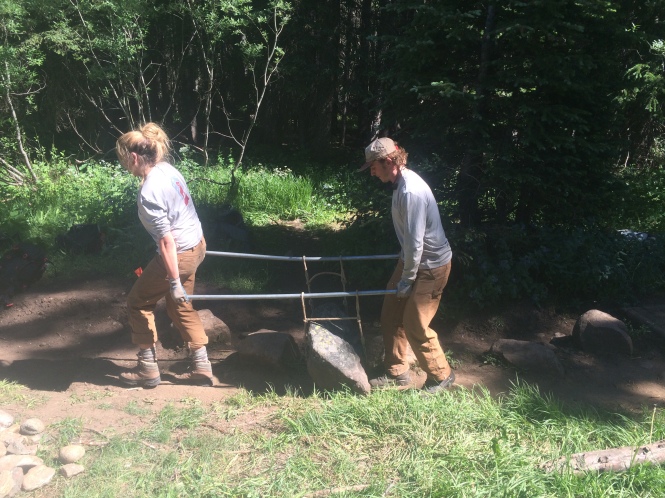
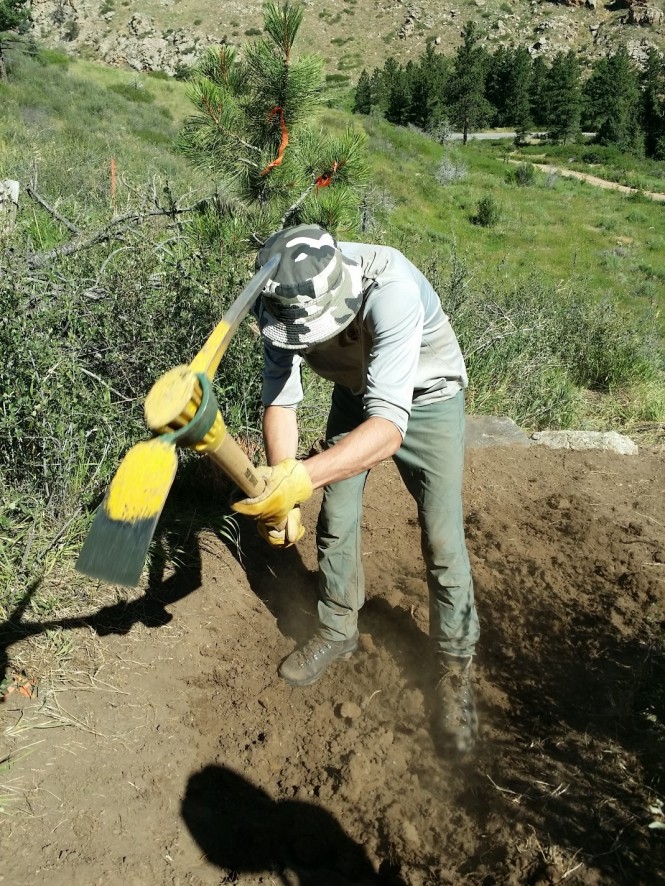
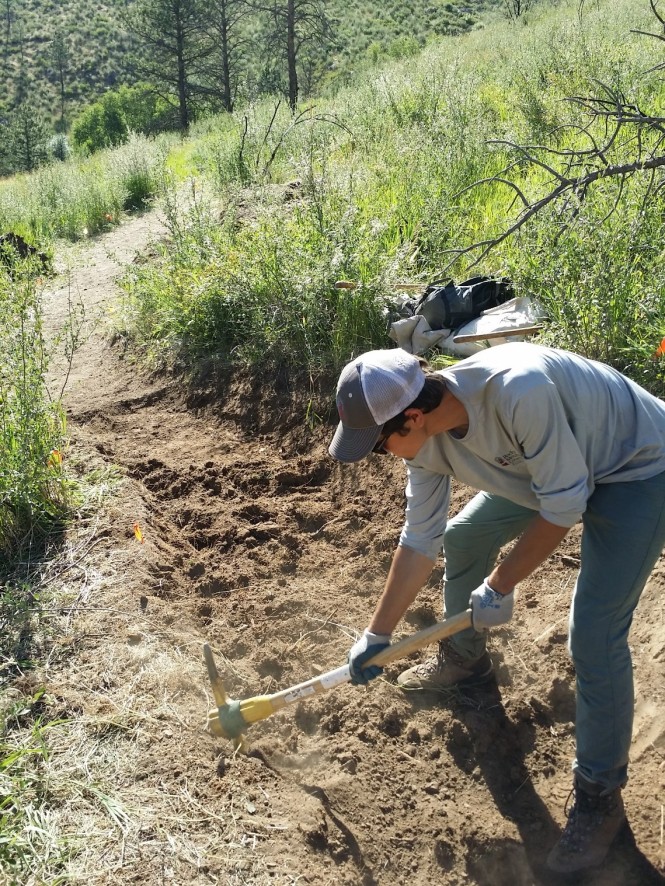
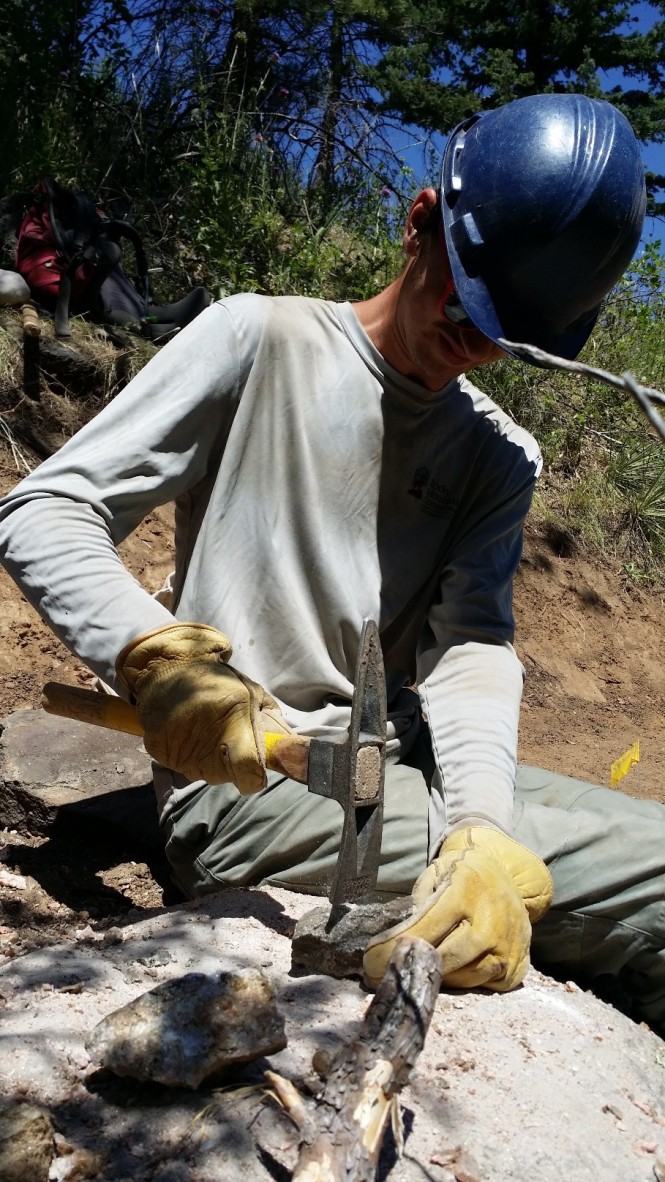
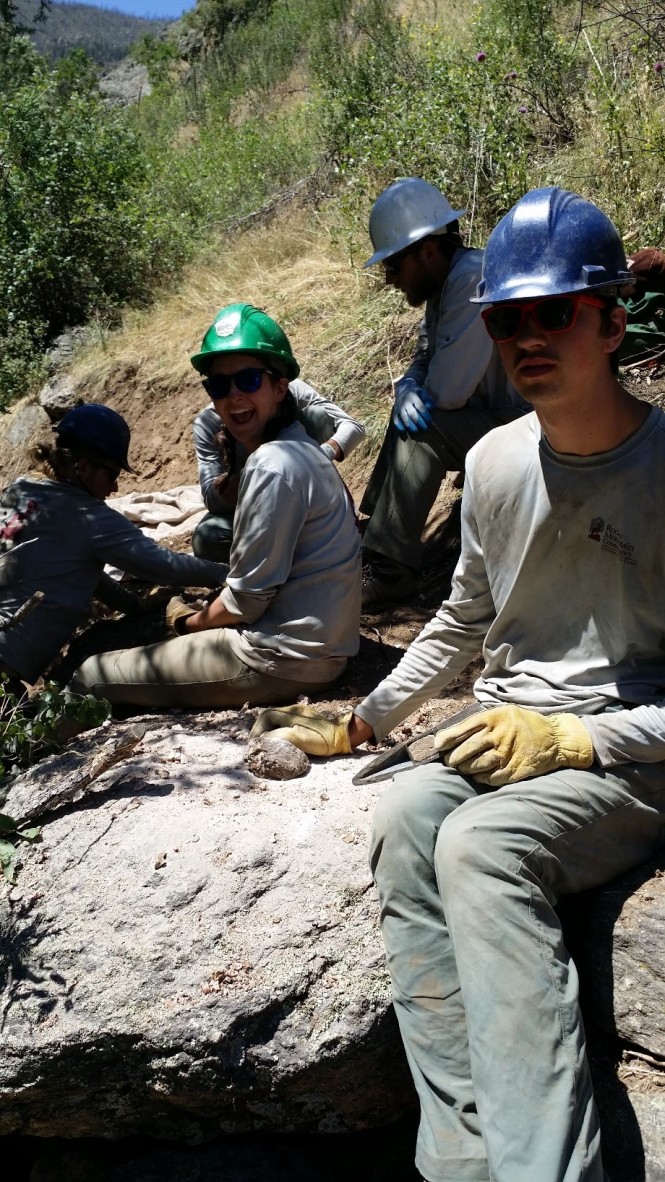
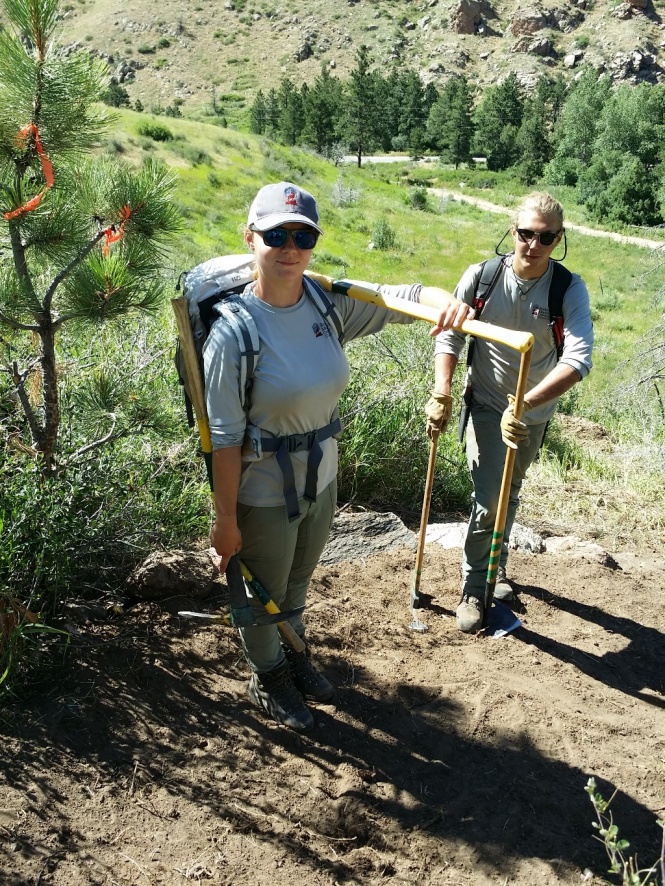
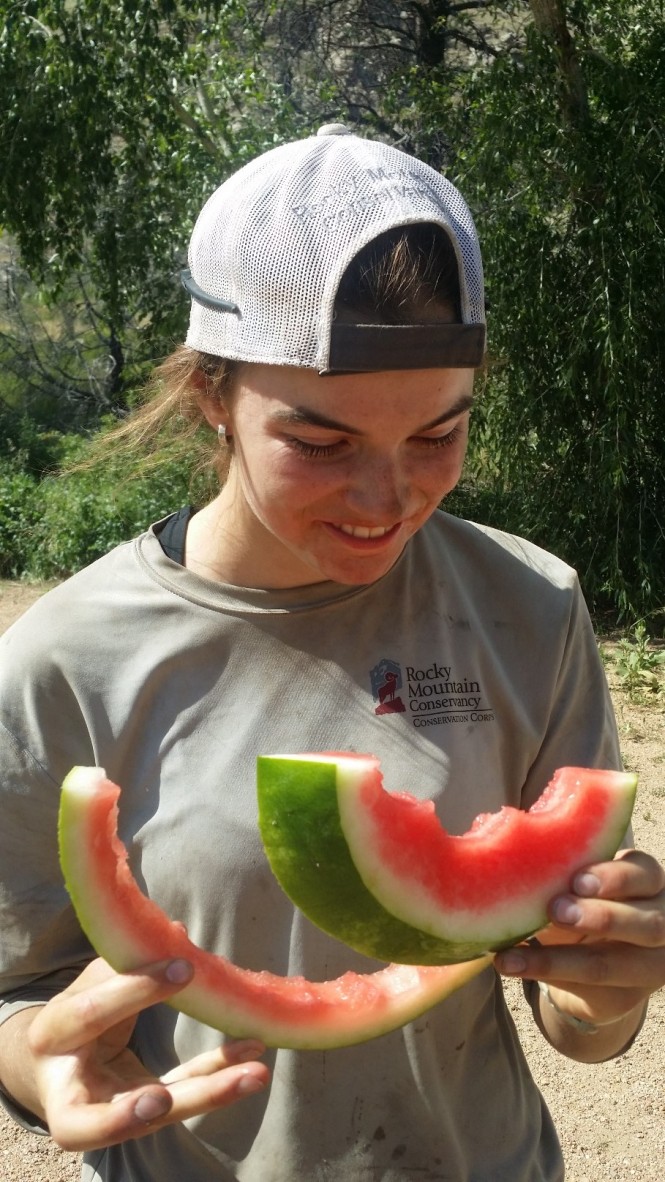
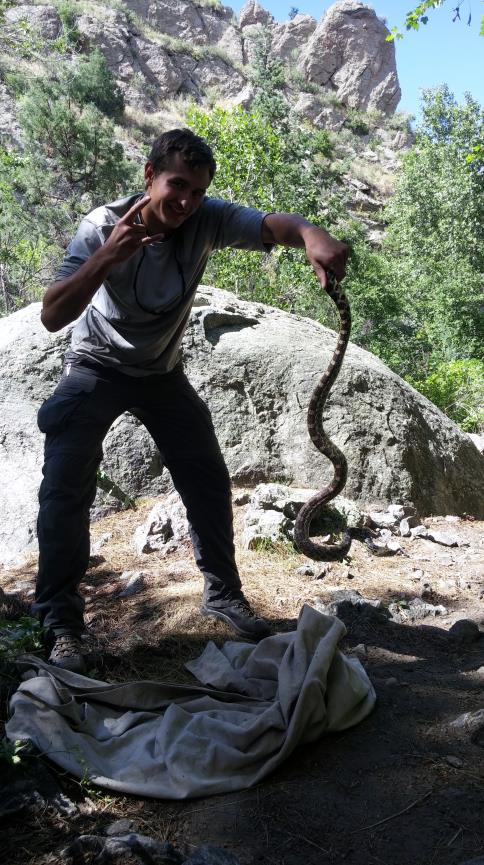
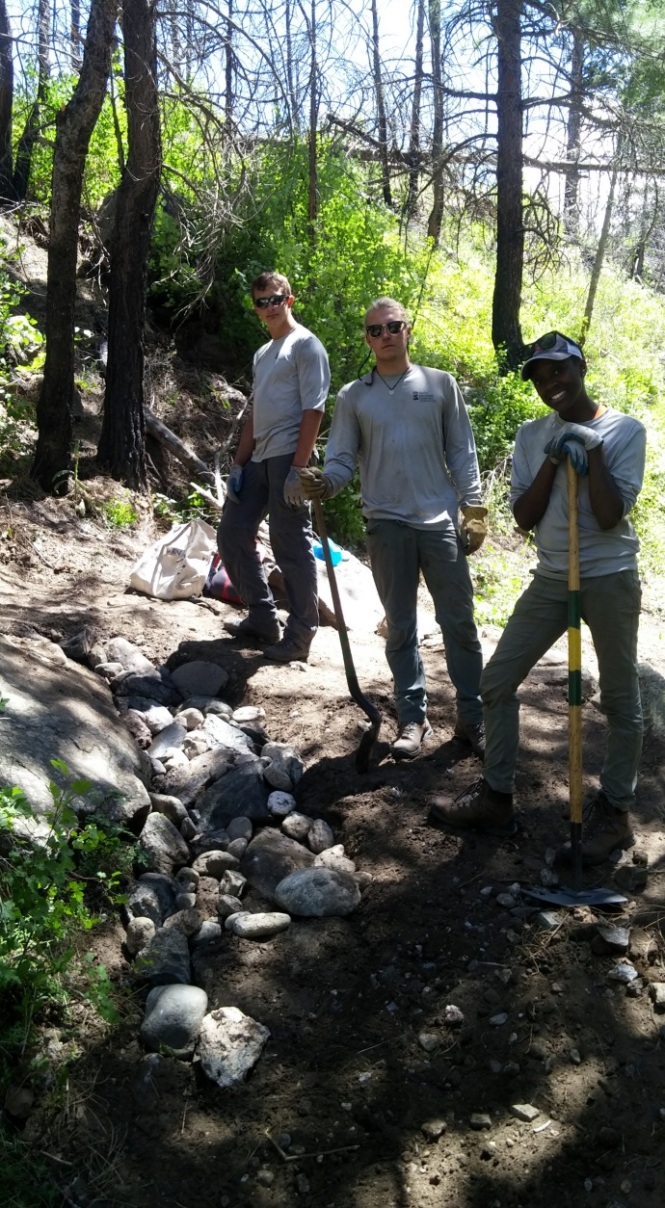
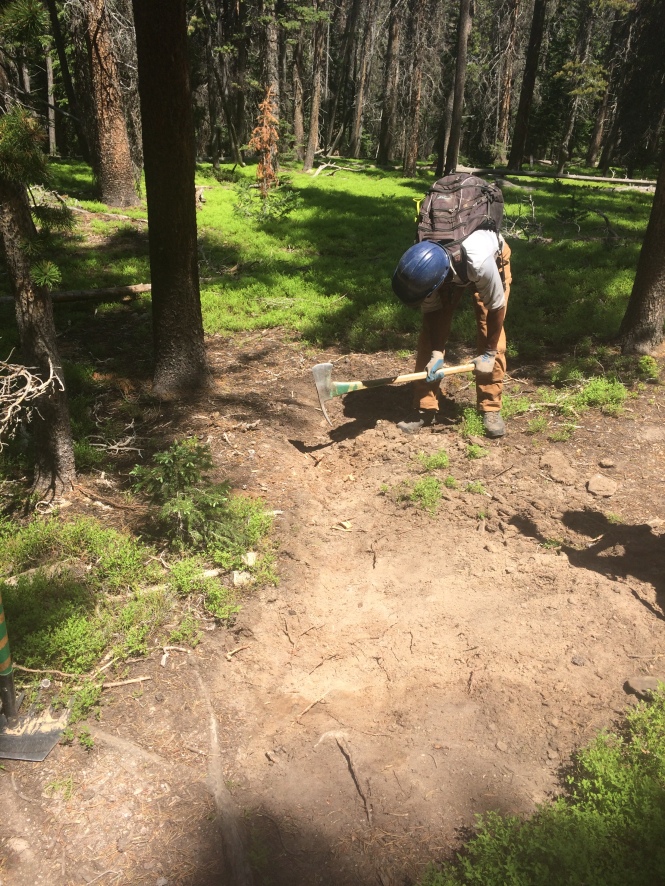
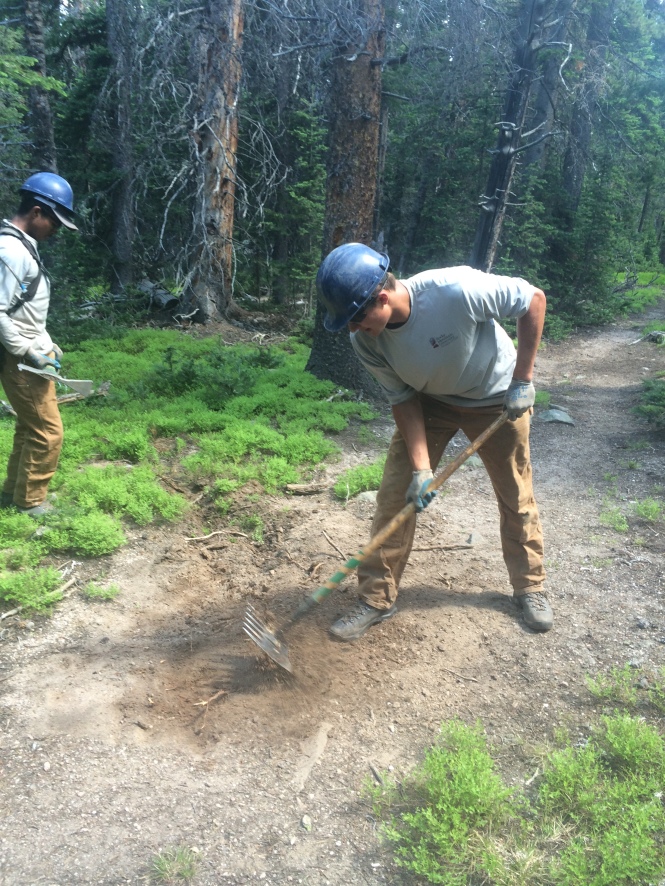
![IMG_2620[1].JPG](https://rmconservancyconservationcorps.files.wordpress.com/2016/07/img_26201.jpg?w=665)
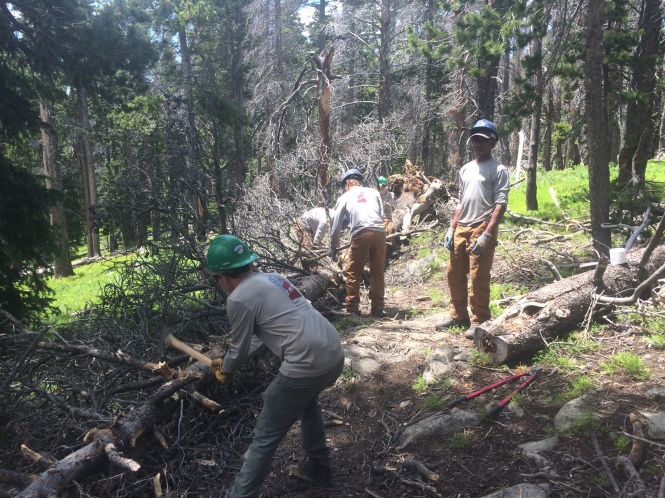 -Arin Leopold, Red Feather Crew Leader of the Week
-Arin Leopold, Red Feather Crew Leader of the Week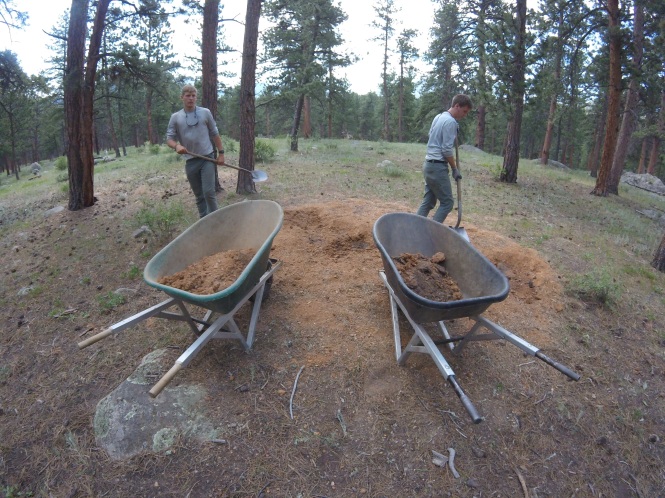
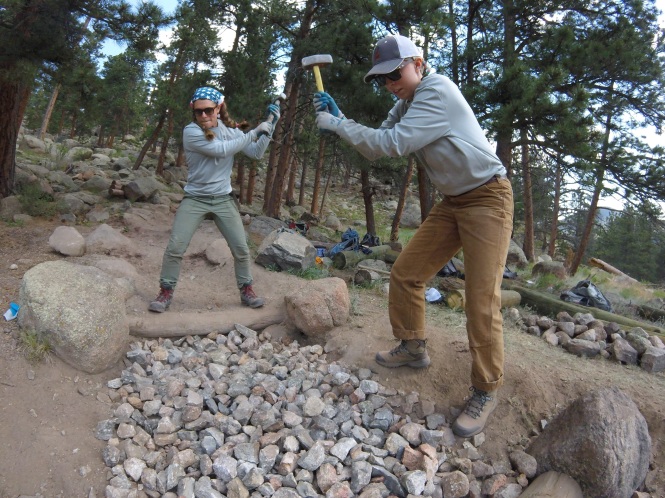
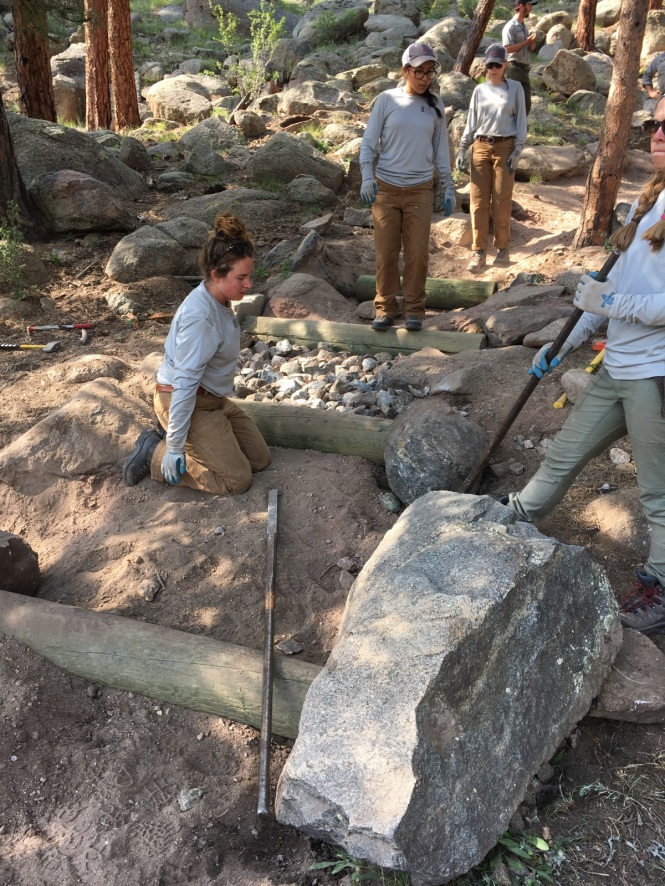
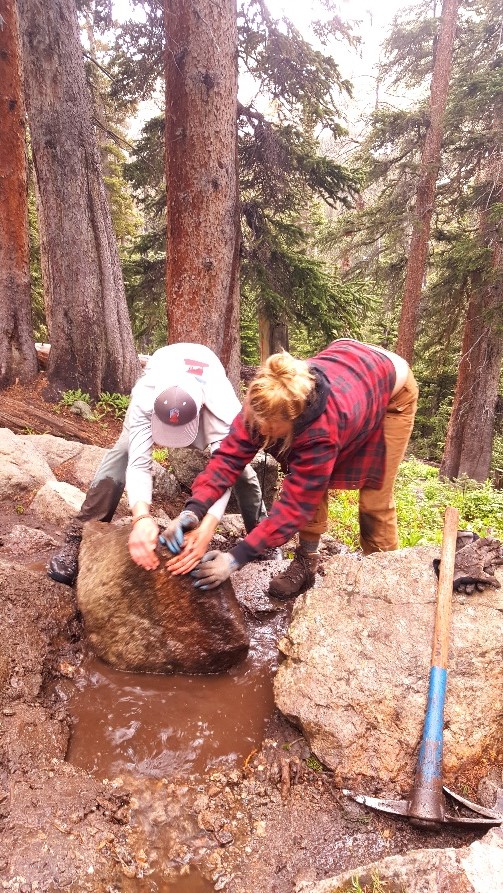
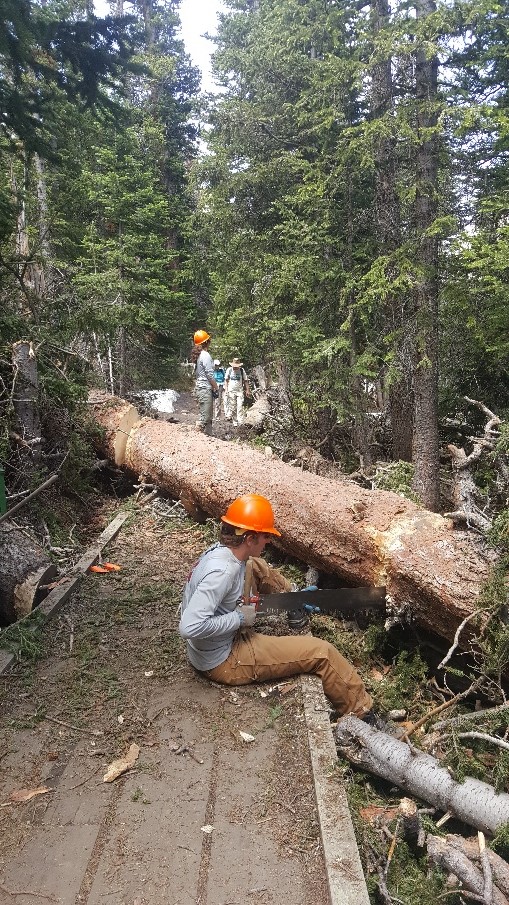
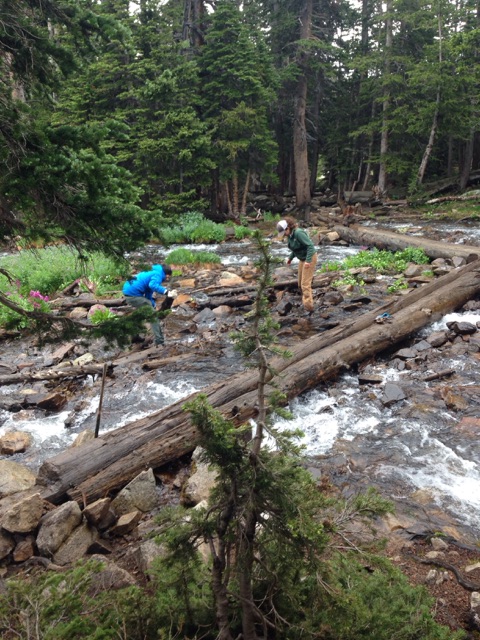
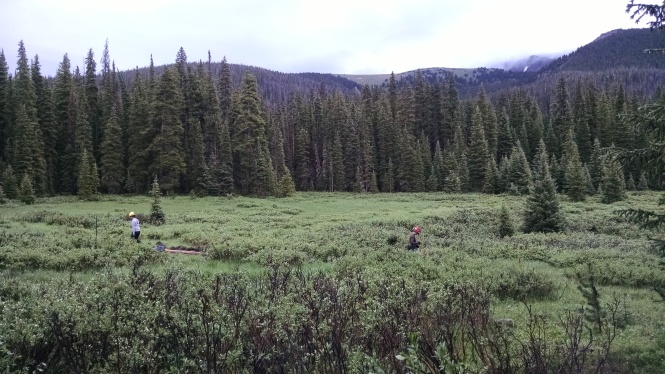 Crew leader Amy and Forest Service liaison Kendra survey the marsh and determine where to build the turnpike
Crew leader Amy and Forest Service liaison Kendra survey the marsh and determine where to build the turnpike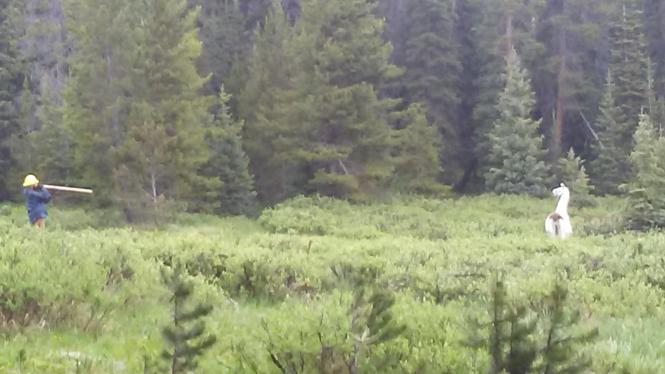 Toby learns to speak llama
Toby learns to speak llama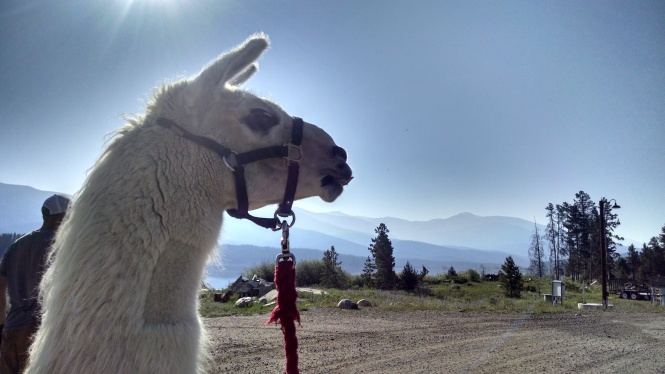 Jed, the most beautiful llama in the world
Jed, the most beautiful llama in the world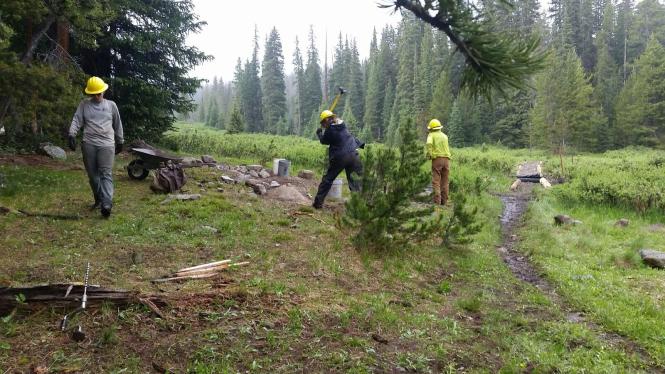 Crew members set up rock crushing stations, using single jacks and double jacks.
Crew members set up rock crushing stations, using single jacks and double jacks.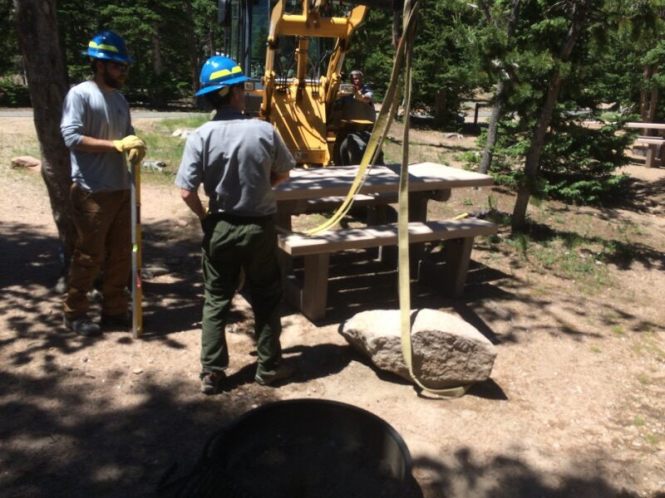
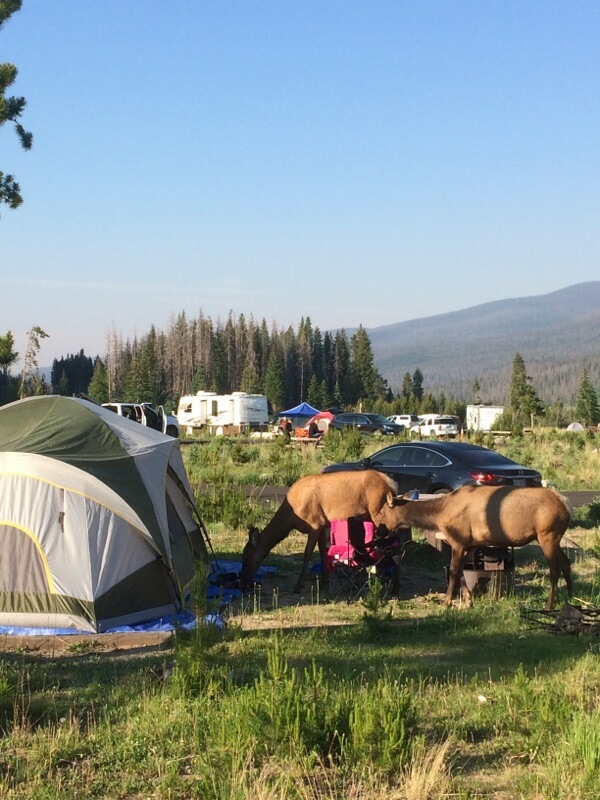
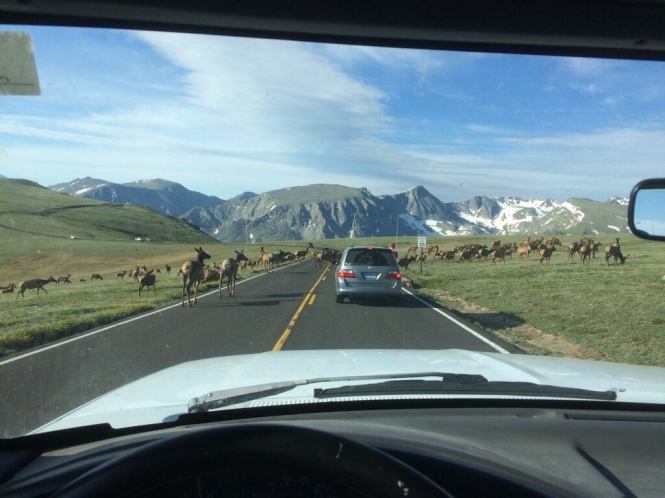
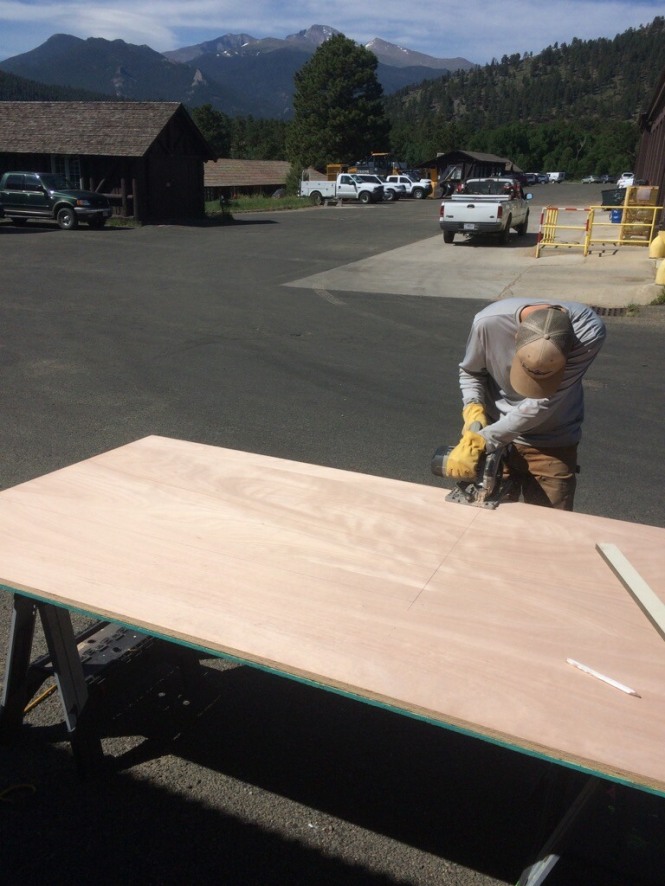
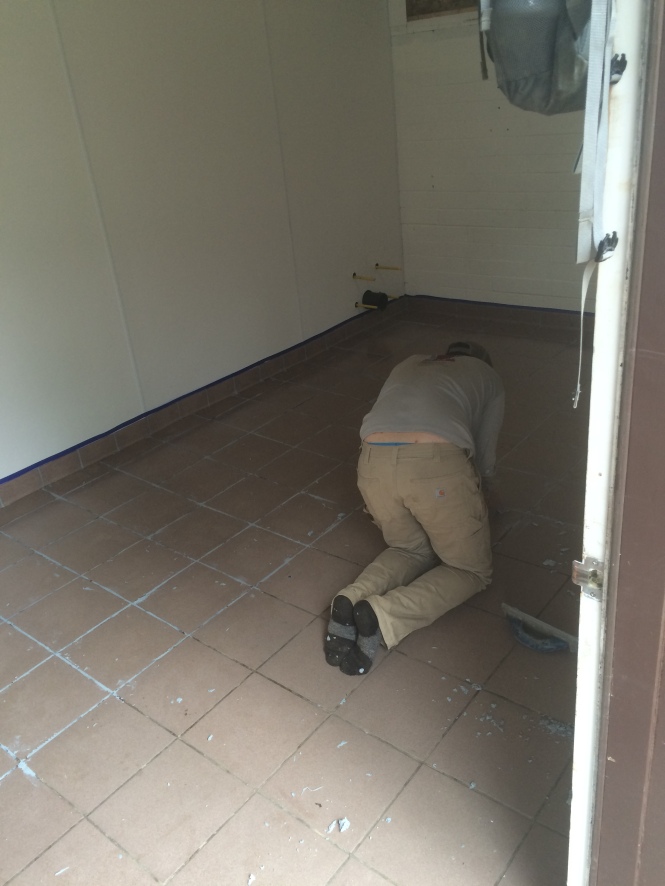
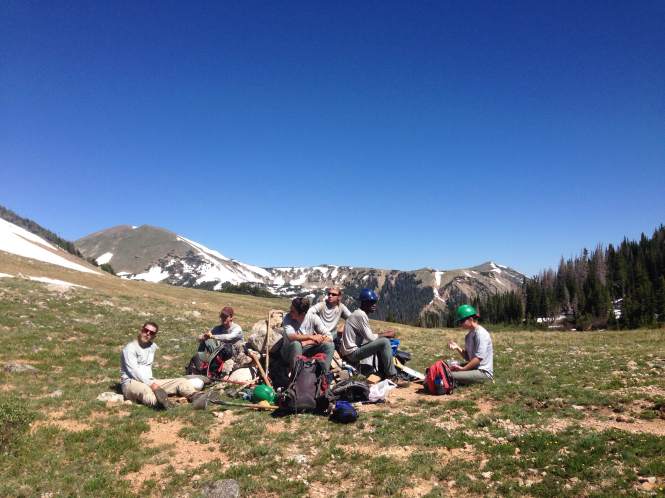 Geoff and the Crew relax on a cairn at the top of Blue Lake Trail.
Geoff and the Crew relax on a cairn at the top of Blue Lake Trail.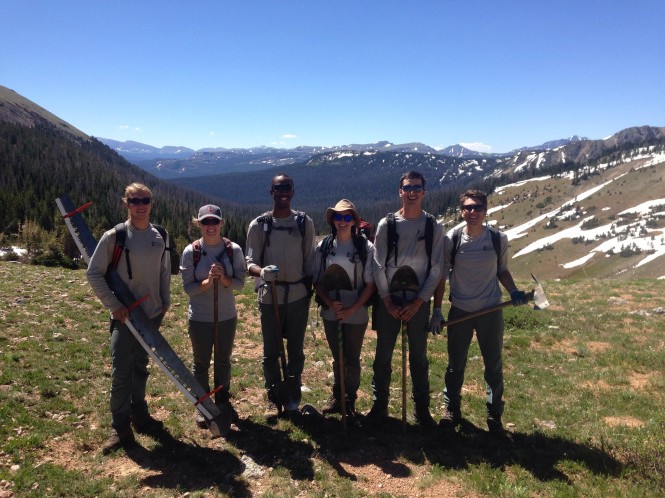

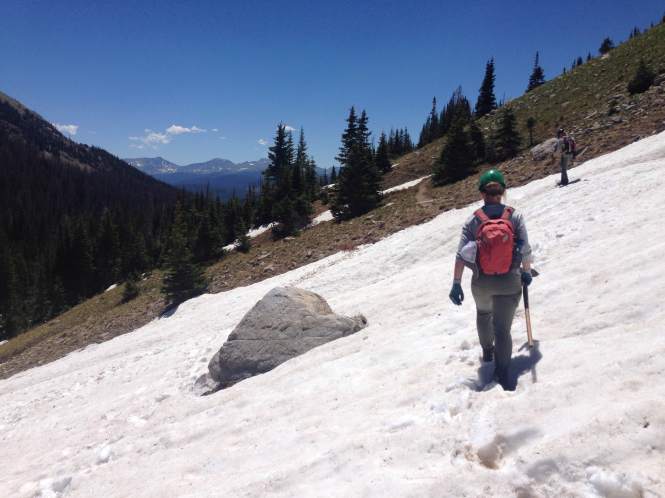
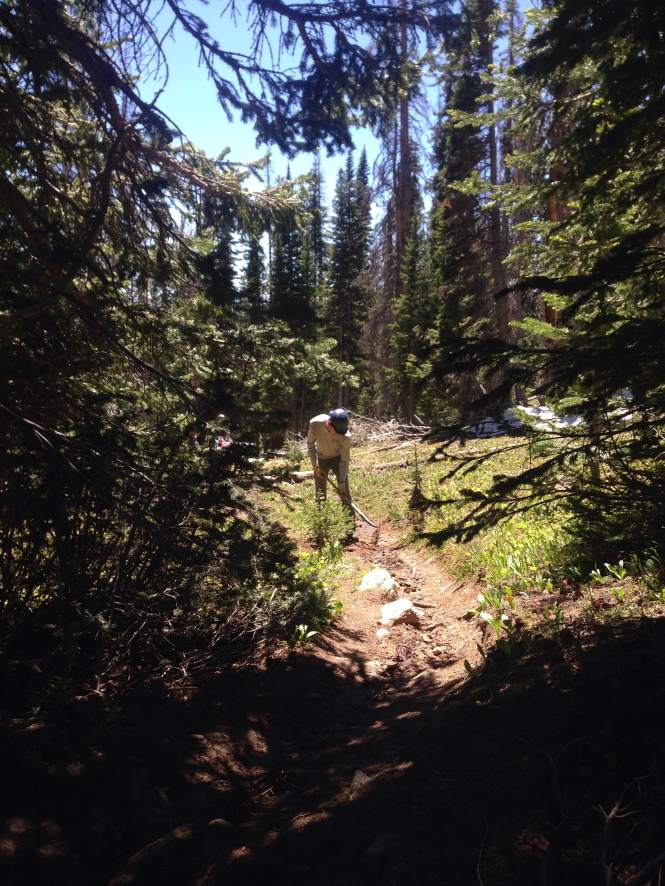
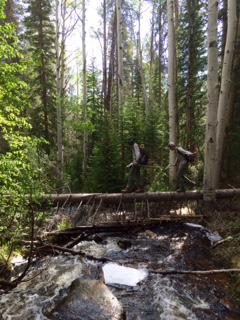
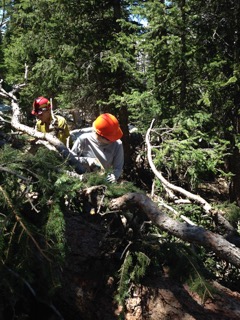
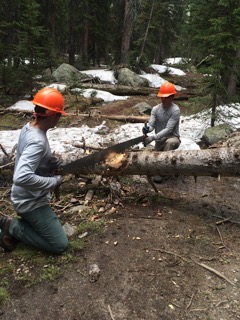
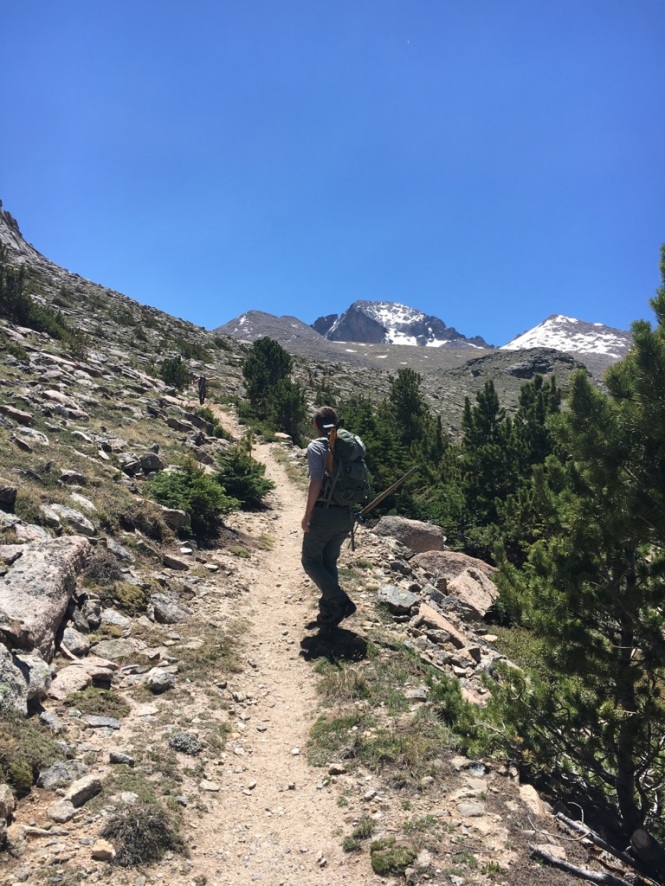 Ben with a view of Longs Peak from our maintenance run.
Ben with a view of Longs Peak from our maintenance run.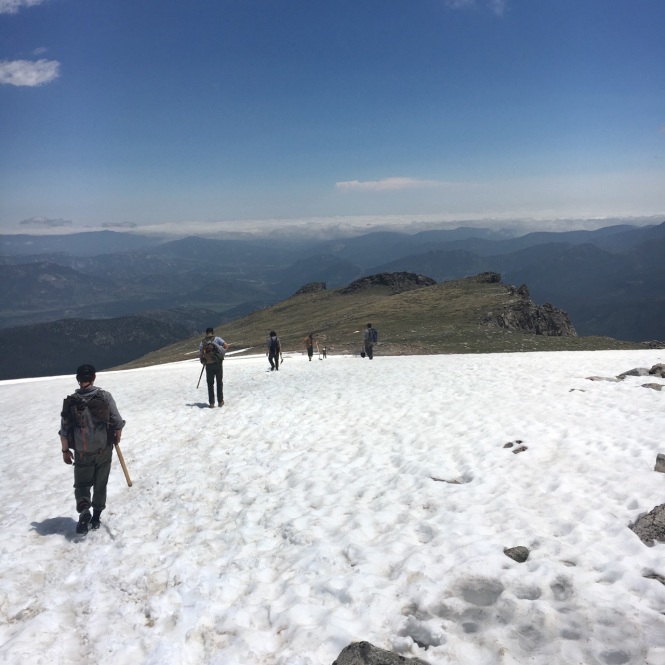 Us and some of the NPS crew making our way down from Flattop Mountain.
Us and some of the NPS crew making our way down from Flattop Mountain.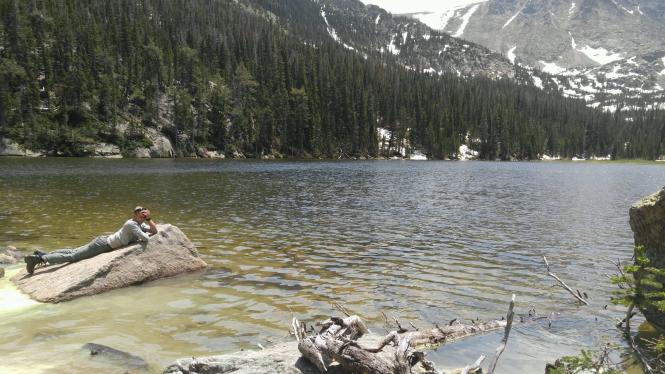 Hunter hanging out at Odessa Lake during lunch break.
Hunter hanging out at Odessa Lake during lunch break.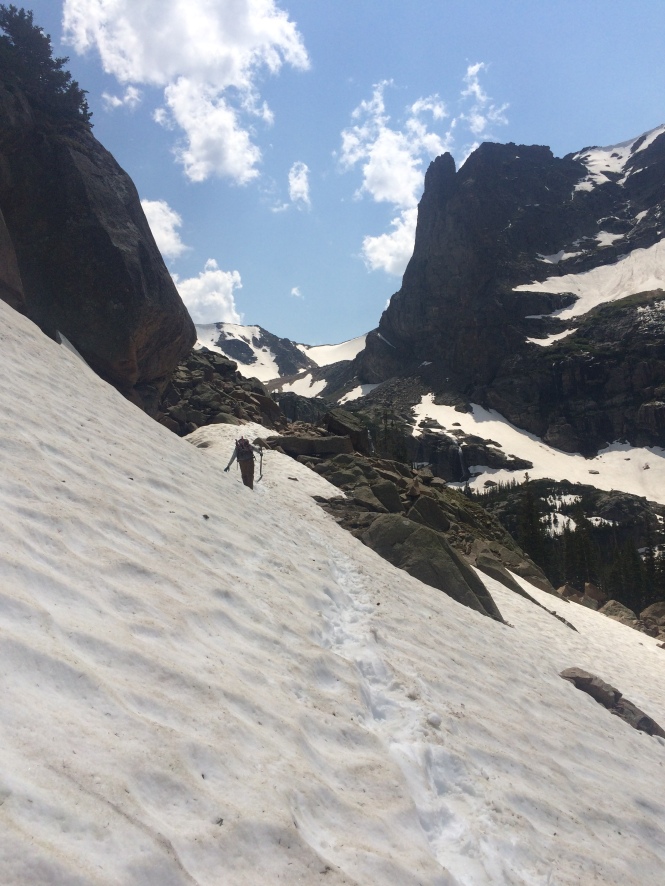 Ritzi making her way across a snowy pass
Ritzi making her way across a snowy pass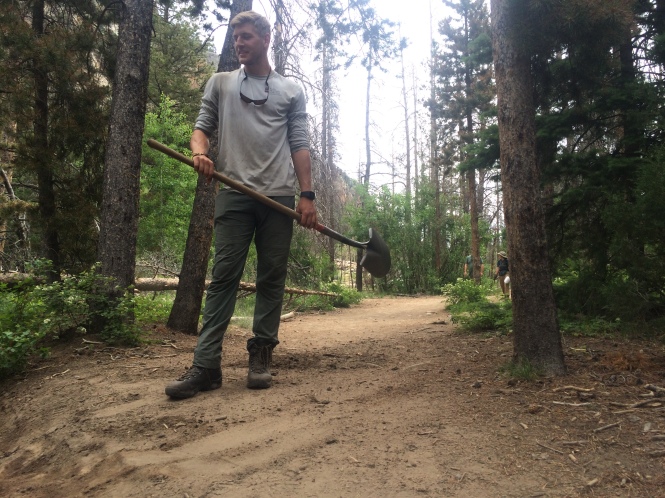 Hunter admiring his handy drain work on the Fern Lake trail
Hunter admiring his handy drain work on the Fern Lake trail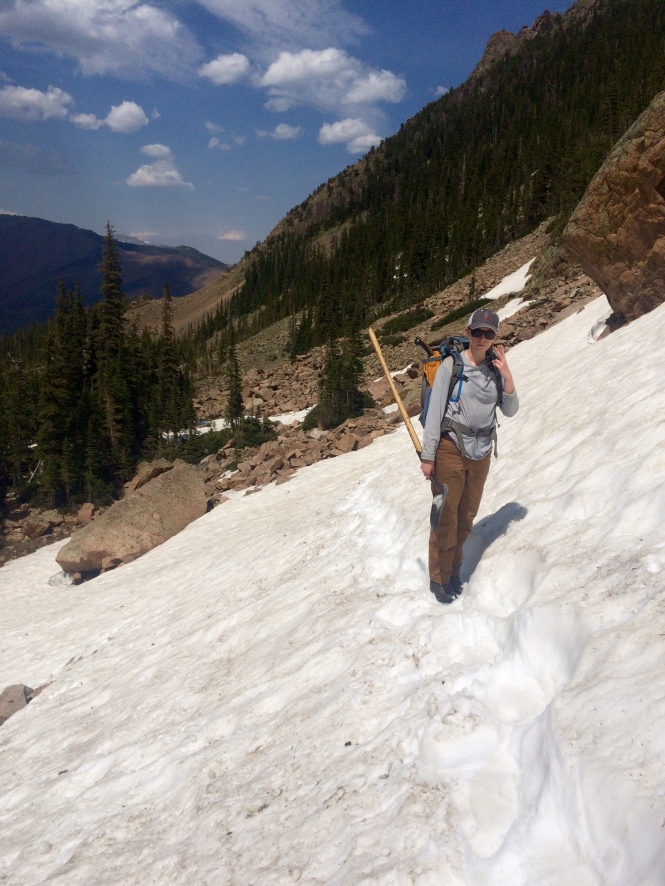 Jesse on the Odessa Lake trail
Jesse on the Odessa Lake trail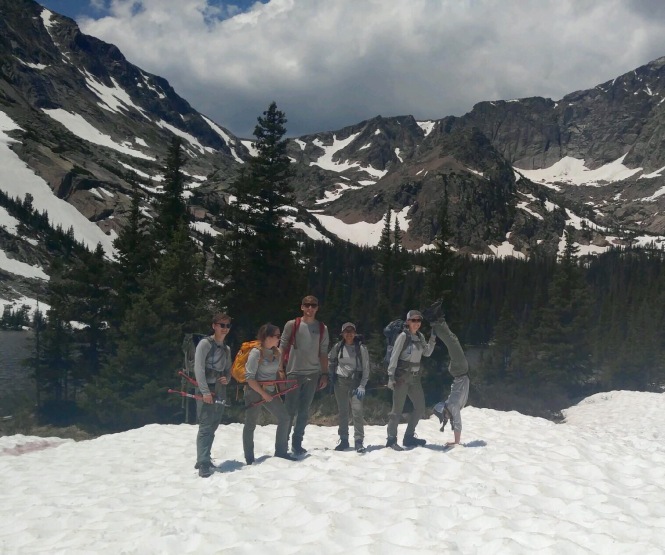 A very serious group photo at Thunder Lake
A very serious group photo at Thunder Lake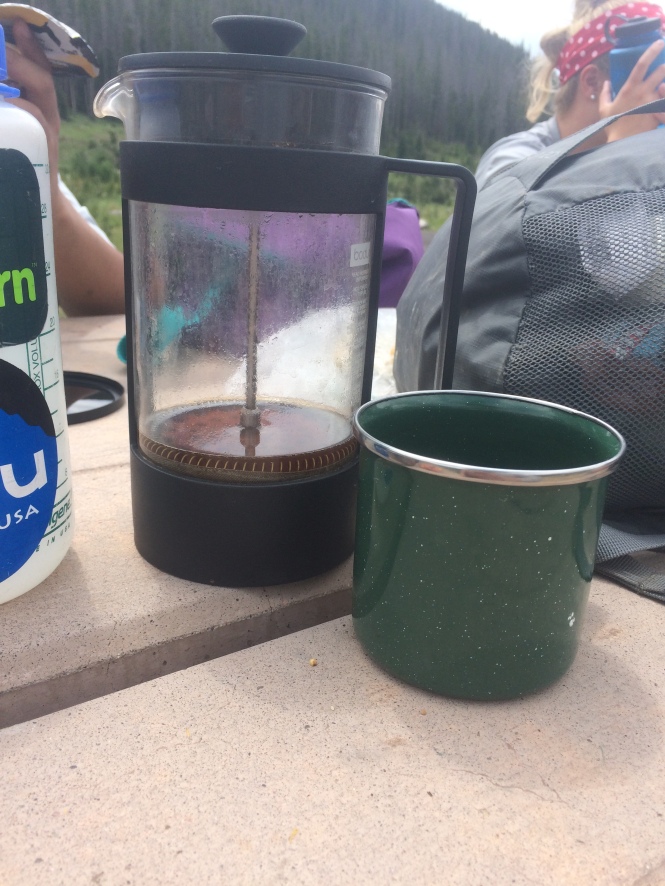
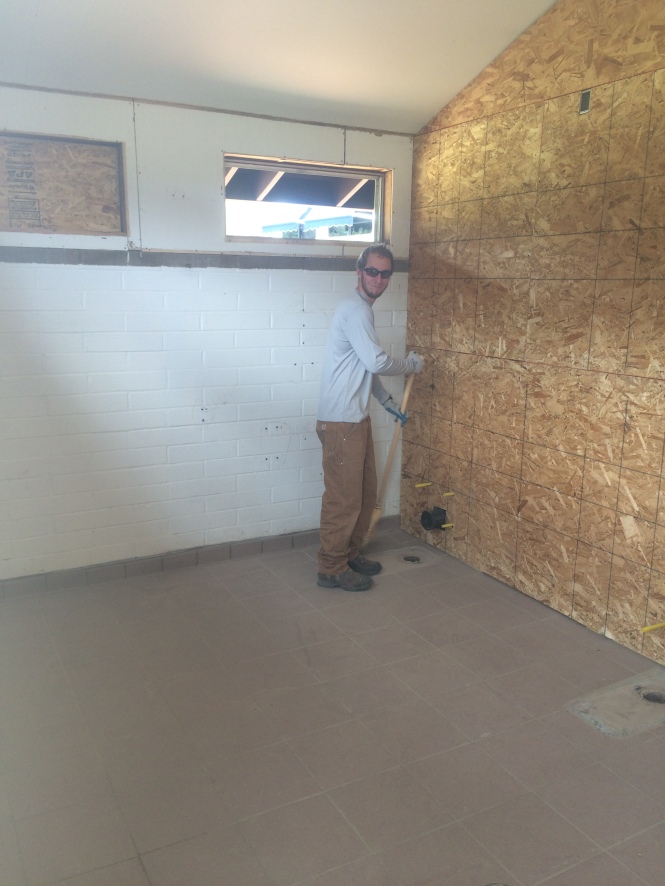
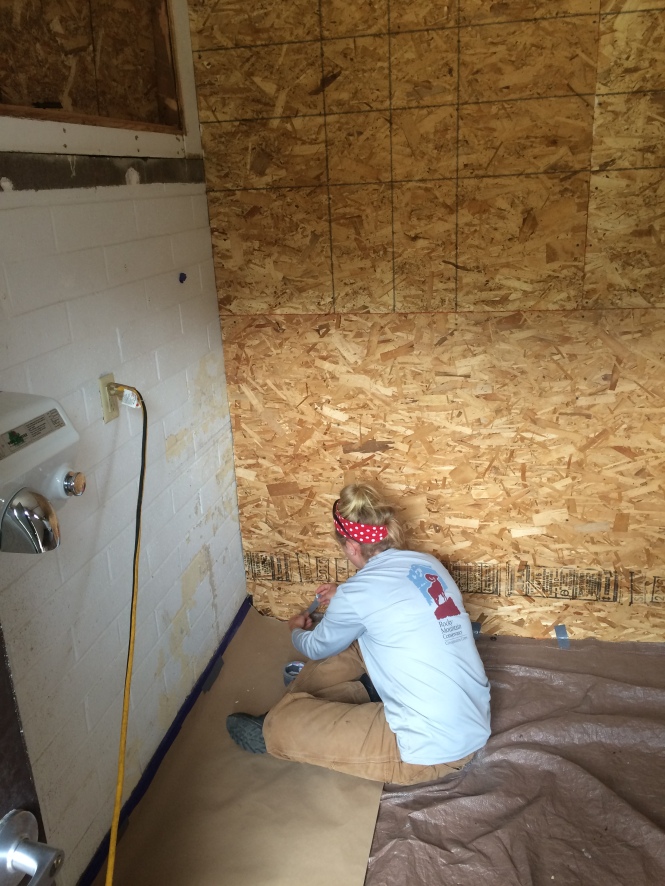
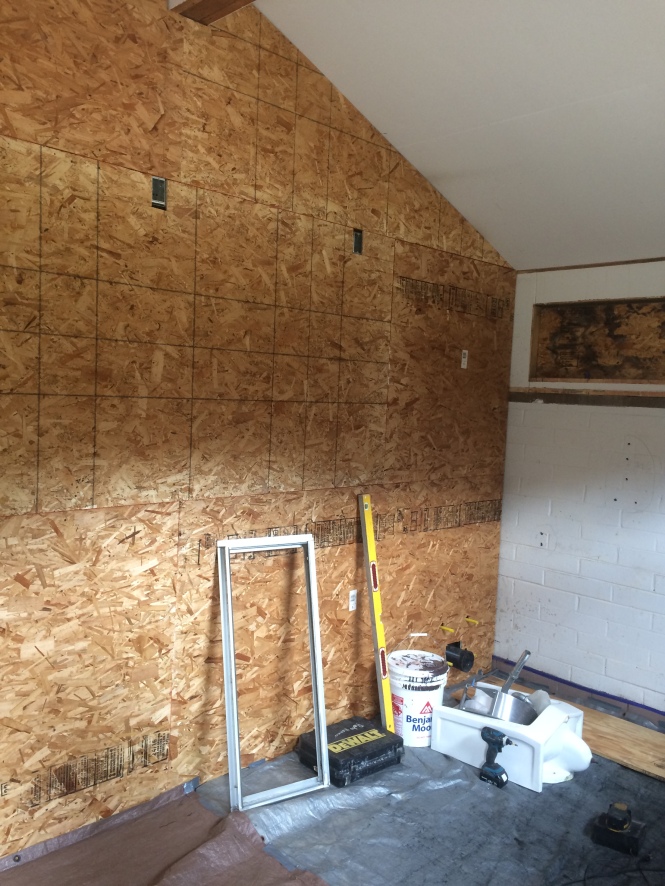
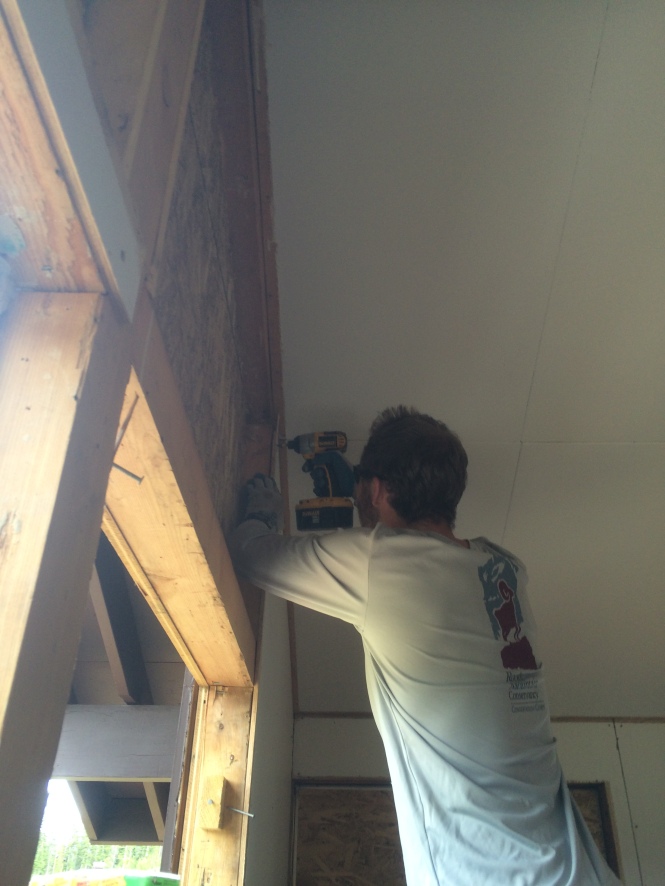
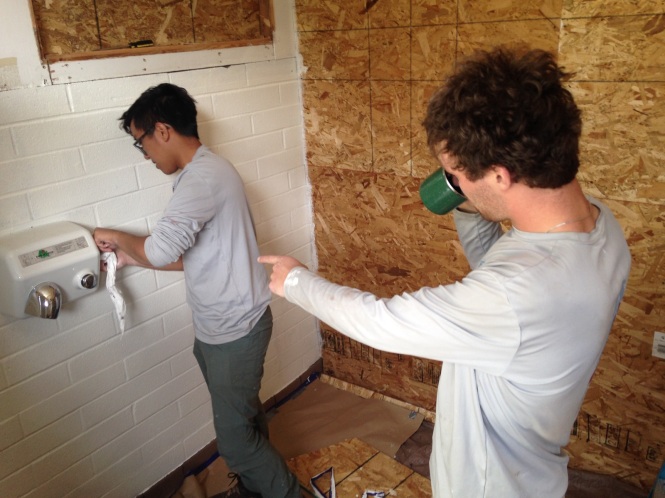
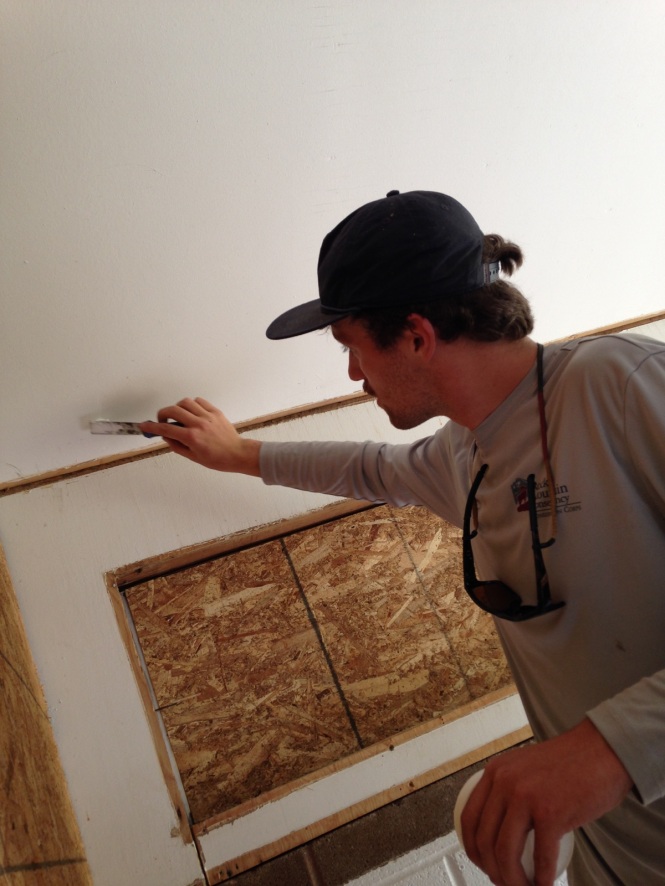
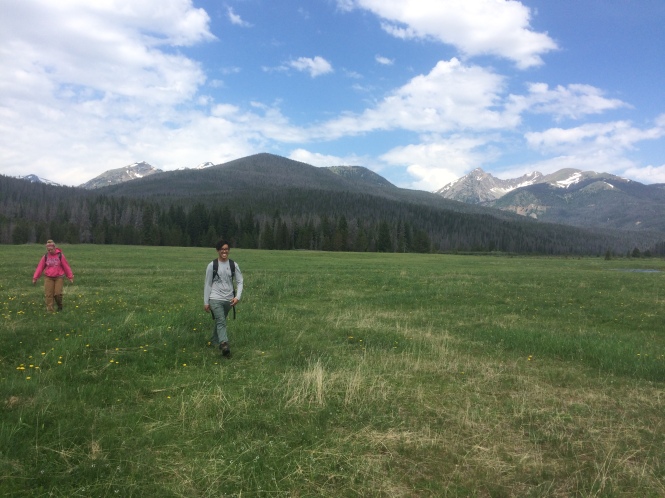
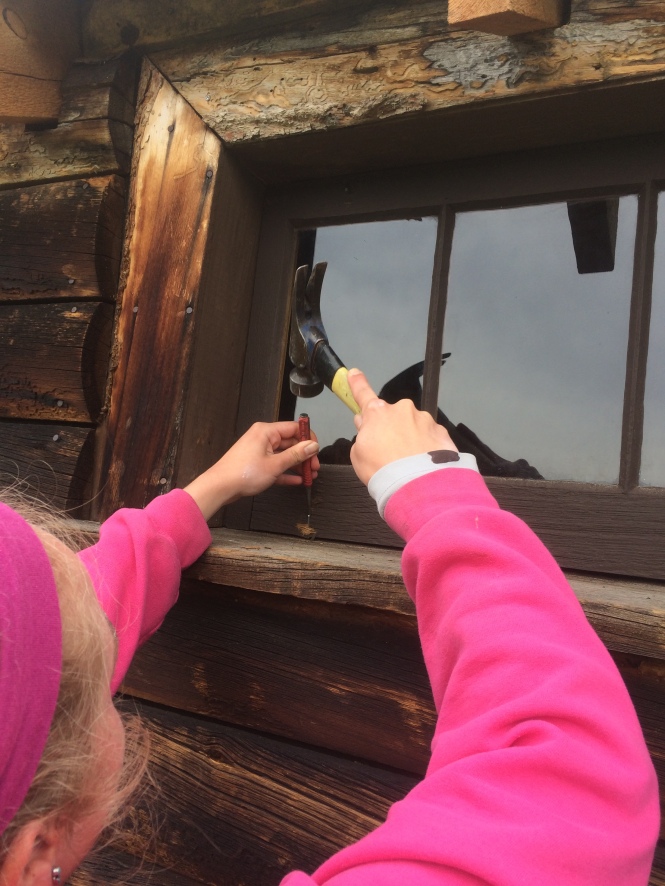
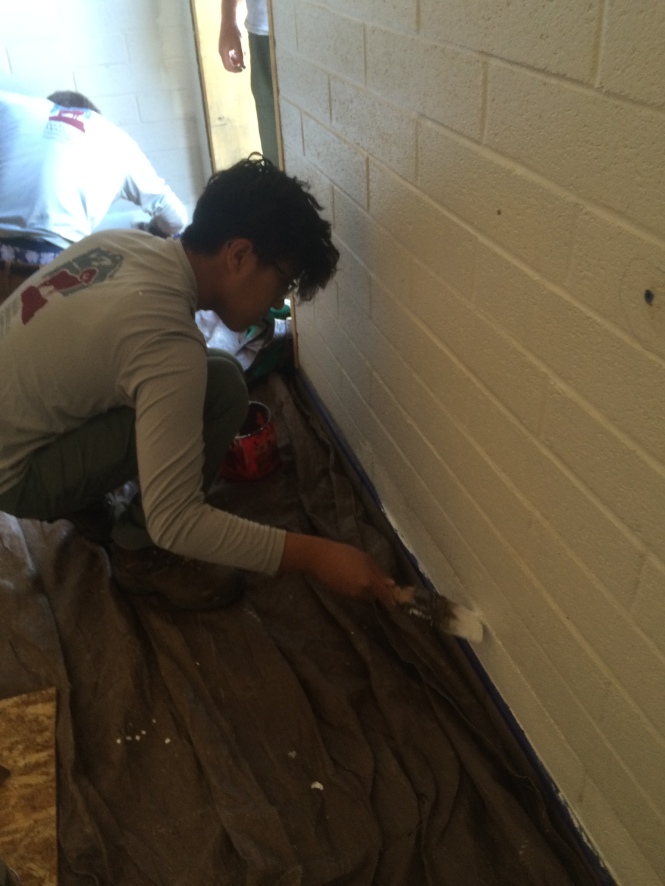
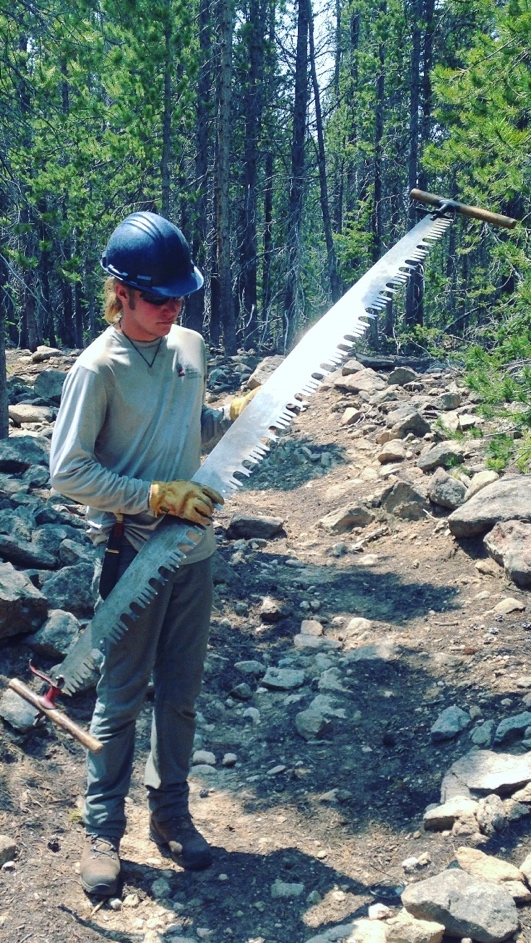
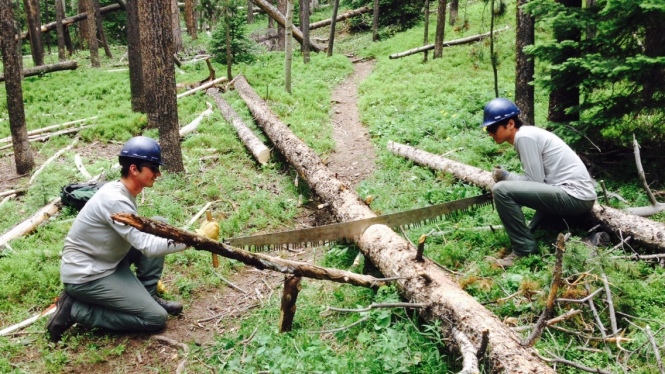 Crew members, Gus and Garret, master their cross cut skills.
Crew members, Gus and Garret, master their cross cut skills.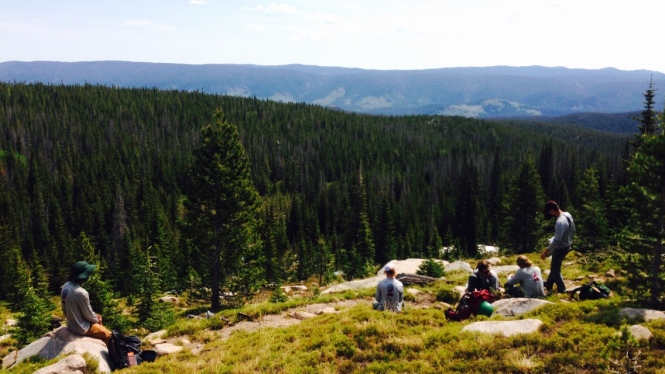 The crew enjoys lunch and the mosquitos enjoy theirs – not so pleasant.=
The crew enjoys lunch and the mosquitos enjoy theirs – not so pleasant.=